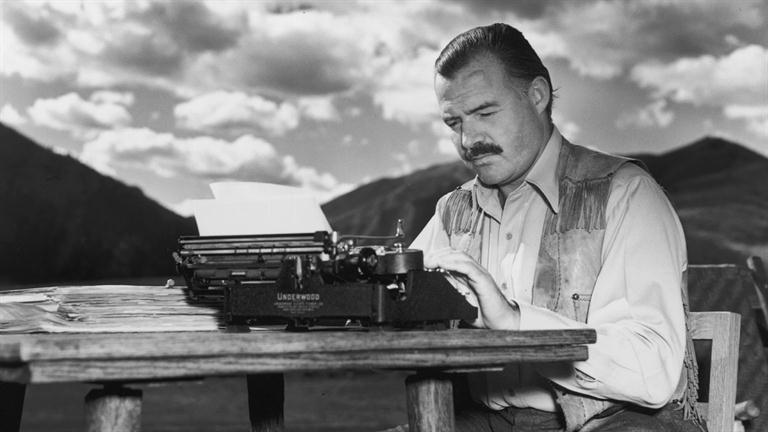
Hemingway’s Rules of Writing Still Work
(This article was written for PR and Market professionals. But these rules are solid for anyone needing to communicate effectively.)
I’ve hired fresh Marketing and PR grads and found most unprepared for today’s fast-changing communication landscape—not due to their education but the industry’s rapid evolution. Blogs, social media, vlogs, podcasts, SEO, and more—keeping up with the tech alone can be overwhelming.
Complex and Under-appreciated
It’s a skill and art that is complex, under-appreciated and, as far as I can tell, under-emphasized by schools. Or—if you have the teeth-pulling, Novocain-less pleasure of reading many press releases—companies, for that matter. Why is that? One of the main reasons is …
It’s Complex to Write Simple These Days
Ernest Hemingway had a clear understanding and vision of writing simply and effectively when he discussed the four rules of writing he learned as a journalist at the Kansas City Star.
Hemingway Four Rules
(well, not really, they were the Kansas City Star’s actually)
- Use short sentences.
- Use short first paragraphs.
- Use vigorous English.
- Be positive, not negative.
“Those were the best rules I ever learned for the business of writing,” Hemingway said in 1940. “I’ve never forgotten them. No man with any talent, who feels and writes truly about the thing he is trying to say, can fail to write well if he abides with them.”
These rules still work. Rarely used. But still, work.
However, in defense of most PR practitioners and writers today, Hemingway didn’t have to contend with the New PR. SEO PR. Google News. Yahoo News. He didn’t need to be Facebooked, Redditted, Liked, Googled, Tweeted ( X’ed), Retweeted, Instagrammed, blogged, etc…
From Their Eyes
For just a second, step into the shoes of a new PR practitioner, right out of school, or even an experienced practitioner, who has not kept up with the rapidly changing online PR processes and communication tools.

The first thing (and it would be super if this happened) they might hear about is the Hemingway rules above. That’s probably a stretch. But they might hear something like, “to effectively use all the new technologies and communication tools in ‘New PR,’ you have to be able to write simply.”
Hemingway’s Philosophy 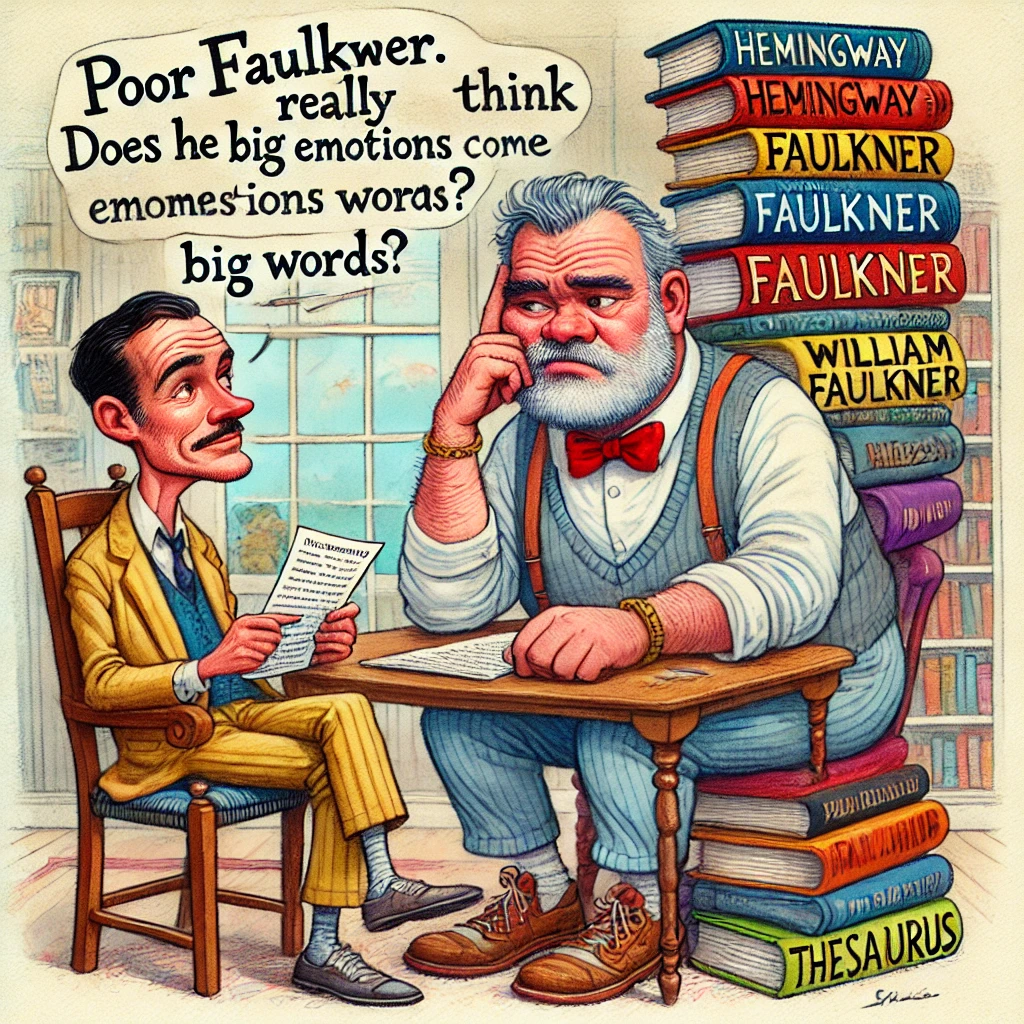
Keep It Simple: You don’t need a thesaurus to move readers.
Let’s start with the simple. A simple press release. Doesn’t get much simpler than that, does it?
Simple?
What’s simple? Well, that’s easy, simple is simple. Easy-to-read, easy-to-understand, with specificity and authenticity. Elegant simplicity will build trust and credibility for you and your organization. Wow—that is simple. Sounds simple anyway. However, I forgot to add …
Headline
Make your headline less than ten words with an imperative verb. Try to keep it to 65 characters if you can so it’s not truncated by search engines. Oh — include a key word or key phrase (average search term is 2.67 words long) in that title for the search engines—and not just for the web search engines. “News search engines” have different algorithms than the normal web-based engines.
Of course, that’s simple. Everyone knows that, even a freshly minted Grad student. Don’t they?
Subtitle
Amplify the title. Try to include a keyword or key phrase here too, if possible. Test it for effectiveness. How strong is your keyword – your key phrase? Do you know? (Or, do you even know how to test it, might be a better question?) But … also make it interesting, funny, mysterious, appealing, compelling … simple, easy-to-read and easy-to-understand.
Got it? Simple. Next …
Body
Include a keyword/phrase in the first 50 words of the release (because you’ll be lucky if most journalists will ever get that far, so give it your best shot). Embed hyperlinks in the body of your press release to help draw your audience (prospects/media/analysts) into your story – prompting them to visit your website or respond to a call to action.
Doesn’t get much simpler than that.
Frankenquotes
Yes, they’re boring. But you will use them. Hardly anyone will ever read them (except the Frankenquoted person). I’ve included some below culled from actual new releases so you have a better idea what they are— just insert your company or executive’s name. Freebies from me. No need to thank me.
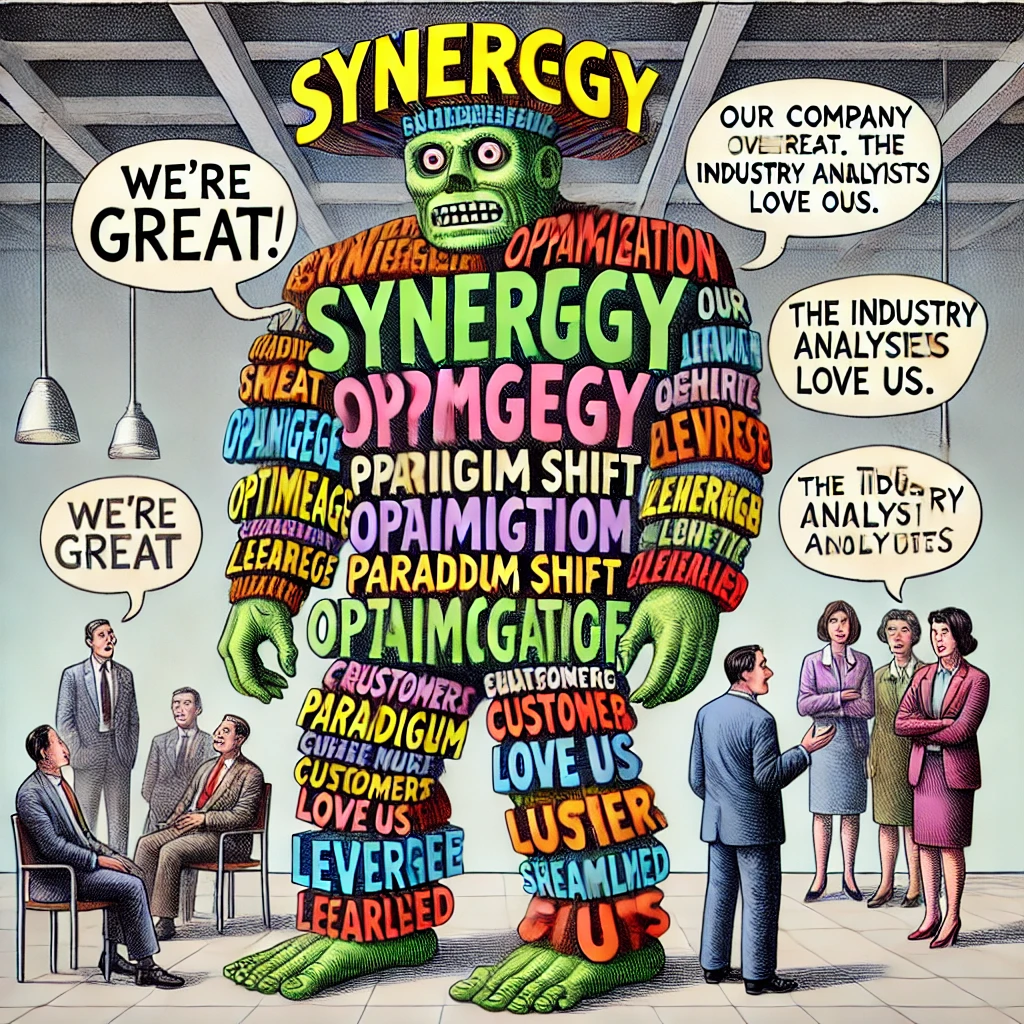
We’re Great!
“We’re Great.” “Our company is great.” “Our customers love us.” “The industry analysts love us.”
Remember the Rules!
Remember, though, you still have to make it interesting, funny, mysterious, appealing, compelling, simple, short, easy-to-read, easy-to-understand and use specific keywords and phrases.
Boilerplate
Does anyone ever read this? Hardly ever.
Under-Boiled and Under-Valued Piece of PR Real Estate
However, the boilerplate is one greatly undervalued piece of PR real estate. Do not, I repeat, do not repeat any of your Frankenquotes in your boilerplate. But do use the Four Hemmingway Rules of Writing to answer the four questions that any reader wants to know;
- What do you do?
- How do you do it?
- Why are you different?
- Why should I buy from you?
Reinforce those four questions with embedded hyperlinks back to your website with specific and credible information to back up your statements.
Money Makes You a Better Writer
We’re almost done with the simple press release. The important fact here – You also need to do all of the above in 400 or fewer words. Now, I know what you’re thinking: ‘What!?’ You inherited a corporate boilerplate that was 2,400 words long by itself! Why under 400 words? Typically the wire services charge you around a dollar per word after 400 words. Ouch.
Spend the money like it’s your money. It will make you a much better writer, better businessperson, and a more responsible and trusted employee.
Delete the 2,400-word boilerplate. Concentrate on a great, eye-catching headline that’s less than ten words long with a keyword/keyphrase. Nail the story angle with elegant simplicity in the first 50 words.
Money can make you a better writer … But only if you write like it’s your money you’re spending.
Whirling Dervish of the New PR/Marketing World
Writing simply is hard. It is far easier to write long, complex pieces, believe it or not. But like it or not, writing simply is THE KEY to effectively communicating within this whirling dervish of a new PR world.
Good Can …
A good writer can adapt, learn, and flex with the new PR technologies.
Bad Can …
An unskilled, lazy, or bad writer with a great knowledge of the new PR technologies can trash your credibility to a worldwide audience quicker than a supraluminal tachyon (a hypothetical quantum particle that never travels below the speed of light … Hey, I worked for a tech company).
Part Skill – Part Science – Part …
Writing for the new PR world is part skill, part science, and part art.
The Art Part
The “art” part is putting the pieces above together so they’re interesting, appealing, compelling (take a digital breath here, breathe in, breathe out), easy to read, and easy to understand….
- Short sentences.
- Short first paragraphs.
- Vigorous English.
- Positive, not negative tones.
Simple isn’t it?
And that was just a press release.
My Favorite Writing Rule?

Write Drunk, Edit Sober
Though often misattributed, this sums up Hemingway’s commitment to free-flowing creativity followed by disciplined refinement.
Translation: Let your ideas flow freely, but edit them ruthlessly.
Or… just write drunk and edit sober.
###

By Steve Kayser
When you were a little boy or girl you had this dream, you were going to change the world, restore honor, restore dignity. Remember? Did you follow your dream?
Michael Uslan did – and earned $2.6 billion dollars along the way. I had the wonderful opportunity (and great fun) of interviewing Michael. For those of you that don’t know the name, Michael Uslan, he was the executive producer of films such as Batman, Batman Returns, Batman Forever, Batman & Robin, Constantine, The Spirit, Batman Begins, and the second highest grossing film of all time, The Dark Knight. As a producer, he is one of the highest-grossing movie producers of all time, with The Dark Knight alone having already passed the $1 billion mark.
The Boy That Loved Batman
But the real story behind the rise of Batman and the Dark Knight is a Horatio Alger-type tale. And it all started when an 8-year-old boy got mad at the dissing of Batman and vowed to avenge his honor. Michael tells the story in his book “The Boy Who Loved Batman,” a true story of how a comic-obsessed kid conquered Hollywood to bring The Dark Knight to the silver screen. And along the way, a Cincinnati love story places a critical part, without which, the Dark Knight may have never risen.
Steve Kayser: Michael, your book is exceptional. It’s an inspirational tale of how one person (you) armed only with a burning desire to restore dignity to your childhood hero, Batman, conquered Hollywood. Can you talk about the moment – the Bruce Wayne moment – that changed your life forever?
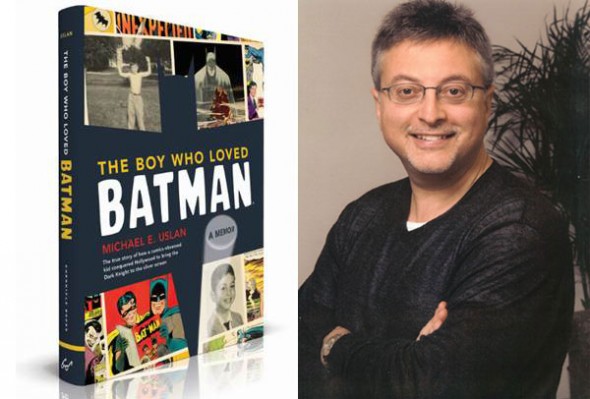
Michael Uslan: Yes, you know it’s funny when those moments strike. I guess I have to explain what a “Bruce Wayne” moment is. For those of you out there who might be Batman fanatics or comic book nerds as I was, young Bruce Wayne, at about age 12, saw his parents murdered before his own eyes. At that moment, he sacrificed his childhood and swore that he would get the guy who did it. Swore he’d also get all bad guys. He made a commitment that he would honor for the rest of his life, even though he had to walk through hell for the rest of his life to do so.
The Dissing of Batman
Well, my Bruce Wayne moment came on a cold night in January 1966. My parents were safe upstairs in the kitchen, and I was downstairs in the den watching the debut of the Batman TV show. I was simultaneously thrilled and horrified by what I saw on TV. I mean I was thrilled that it was the first TV series since George Reeves’ Adventures of Superman, about a superhero. It was in color, the car was cool, but I was horrified that the whole world was laughing at Batman.
POW, ZAP, WHAM
That just killed me. I made my little vow that somehow, someday, someway, I would show the world what the true Batman, the 1939 creature of the night, stalking criminals in the shadows, was really like.
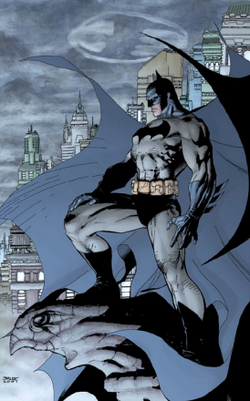
And that somehow I would erase from the collective consciousness of the world culture those three little words: pow, zap, and wham.
Steve Kayser: Uh-Oh. I love those words. I knew that when I heard those words, someone was going to get a butt-whipping. Robin was going to get in trouble. Then he’d say, “Holy crap.” Then Batman would save him.
And the world would be alright.
Michael Uslan: It was a superhero version of Tourette Syndrome that Robin had.
Steve Kayser: Haha, funny. What I liked about that is, down deep you realize that Batman has one thing that none of the other superheroes had. He was a normal guy in extraordinary circumstances, very much like Joseph Campbell’s archetypal monomyth described in the book, “The Hero’s Journey.” His parents were killed, was thrown into a life journey to avenge a mighty wrong. You were like that too, but you started that night in 1966. What got you through all those years until you got to college before you started on your grand journey?
Michael Uslan: Well, I was the ultimate comic book fan boy. I collected, read and devoured comics. My mom said I learned to read from comics before I was 4. By the time I graduated high school, I had a collection of over 30,000 comic books dating back to 1936.
My poor dad, when we moved into our house, never once got his car in the garage. But he supported my interest in reading and built wall-to-wall-to-floor-to-ceiling shelves for my comic book collection. And as soon as I filled the shelves up, we sold the entire floor of the garage. So that defined me.
And I was lucky. I grew up in the ’50s and ‘60s. In the mid-‘50s, there was an attack on comic books. A psychiatrist claimed that comic books were the reason for the post-World War II rise in juvenile delinquency and that any kid who read a comic book would become a juvenile delinquent if not worse. Many of my friends’ parents burned their collections, would not allow them to bring comics into the house.
So I was lucky because my mom said if I promised to read books, newspapers, and magazines as well as my comics and kept them neat, I could keep them. That was the best deal I ever had in my life.
So really, in going forward with a goal in life, to have supportive parents, great teachers, and to have ultimately a supportive wife is incredible.
Steve Kayser: You weren’t the product of a billionaire’s son – you worked your way up, knocked down doors and along the way you even got bloody knuckles from pursuing your passion. It was a long road. Years of rejection. You even had one Hollywood producer say that it was the ‘worst idea they ever heard of in their life, creating a movie out of Batman.’
What was your worst rejection, how did you overcome it, and what sustained you?
First – Quit Your “Job”
Michael Uslan: Well, to set the stage, I actually acquired the rights to Batman in 1979 with my partner. I quit my job and went to Hollywood, even though I didn’t come from money and I couldn’t buy my way into Hollywood. I didn’t know anyone in Hollywood. I had no relatives in Hollywood. I thought with Batman in my back pocket I could convince them that dark and serious Batman movies, the way he was originally created, would be something that the world had never seen before and would be tremendously successful.
Batman as a Movie – HaHa – Are You Crazy?
I was shocked when every single studio in Hollywood turned me down.
I was repeatedly told I was crazy. It was the worst idea they ever heard, and the rejections just piled up. It was,
“Michael you are nuts. You can’t do serious comic book movies.”
“Michael, you are out of your mind. You can’t do dark superheroes.”
“Michael for God’s sake, nobody has ever made a movie based on some old television series.”
I had a closet full of rejection slips. One of my favorite rejections was from Columbia Pictures, when after pitching my heart out for the dark and serious Batman, the head of production said,
“Michael, come on, you are crazy. Batman will never succeed as a movie because our movie “Annie” didn’t do well.
“Are you talking about that little red-headed girl who sings Tomorrow?
“Yes.
“Well, what does that have to do with Batman?
“Oh come on Michael, they are both out of the funny pages.”
And that was my rejection from Columbia.
Steve Kayser: What was it about Batman that drew you in so much that it turned into your life’s pursuit?
The Greatest Super-Power … Humanity
Michael Uslan: At age 8, when you are consuming every comic book you can get your hands, it’s magical. These comic books truly are today’s modern day mythology. It carries on from the ancient gods of Greece, Rome and Egypt except for today they are all in spandex and capes. And when you find a superhero who has no superpowers, his greatest superpower is his humanity. Somebody who is not a guy who slugs his way out of a fight with a pow, zap, and a wham, but it’s a guy who typically out thinks his opponent.
At age 8, I did believe in my heart of hearts that if I worked out really hard if I studied real hard, if my dad bought me a cool car, I could become this guy.
In addition to that, you had the primal origin story of Batman that cuts across borders, demographics, and even cultures. You also have the other important elements that give any superhero his popularity and longevity, and that is great super villains. Batman simply had the best.
Steve Kayser: In retrospect, it all sounds easy. A great idea. Great story. A no-brainer. But it wasn’t, was it?
Michael Uslan: No. Let me go back a bit. I was eight years old when I decided my goal in life would be to write Batman comics. That came true for me when I was in college at Indiana University in Bloomington. And you know what? I panicked because then my dream as a little kid had come true. I needed a new dream, what was it going to be? And it took me 10 minutes to think back on that day in 1966 and say, okay my next dream in life is going to bring a dark and serious Batman to the big screen.
But then comes the real challenge … how do you do that? Remember – I was in Indiana.
Well, I had been mentored into DC Comics through a man who became the President there, a wonderful man named Sol Harrison. He brought me into DC when I was in college at Indiana. And when he heard what I wanted to do, he put his arm around me, very fatherly, and said,
“Michael, please save your money, don’t do this. Since Batman went off the air on television, he is as dead as a dodo. Nobody is interested in Batman anymore.”
And I said, “Yes, but Sol if we do it in this new dark and serious way like nobody has ever seen before, we can do it.” He said, “Is there any way I can talk you out of this?” I said, “No.” And he said, “All right, come on in.”
Do You Believe?
It took us six months of negotiation before my partner, and I were able to buy the rights, scrounge up money from people we knew, from dentists, doctors, lawyers, relatives, whatever we could find and get the rights to Batman.
Steve Kayser: So for the next TEN YEARS you busted your butt. Against staggering odds. I would say almost overwhelming odds. Did you ever just say, “Ahh, I might not make it?”
Michael Uslan: Not really. I just kept on plugging. You know, at the bottom of it all it tests your mettle. When life turns into a 10-year long human endurance contest and everyone is telling you,“you are crazy,” “you stink, your ideas are terrible,” you really have to look deep inside and say, ‘Okay, am I just being stubborn or do I really absolutely believe in myself and my work?’
The key thing is you have to have support behind you. I married a girl I met the first day of my freshman year at college. She wasn’t even unpacked when we went out for the first time. And she knew what she was dealing with right up front with a kid who at that point was 18 years old, still reading and collecting comic books, that wanted to make comic books his livelihood Batman. And, by the way, she was a Cincinnati girl.
Steve Kayser: There you have it folks — The Dark Knight Rises because of Cincinnati girls. Wait a minute. That’ didn’t sound quite right.
Cincinnati Saves the Dark Knight!
Michael Uslan: I think I know what you mean. But, as a result, we have spent just so much time over the years in Cincinnati. Her whole family is based in Cincinnati. Her dad founded the Cincinnati Eye Institute, and he became my guardian angel. If I have a minute, I’d like to tell that story.
Steve Kayser: Of course, take more than a minute. It has to be an amazing story because I don’t think any girl I dated in Cincinnati would ever protect me if I told her Batman was going to be my livelihood. Their first response would typically be a knock upside the head.
Michael Uslan: Well, it was at a time where my back was against the wall, the years were going by, I still couldn’t get the dark and serious Batman movie up and running, Finally, I ran out of money, didn’t know where to turn next, or what was going to be. And my father-in-law, Dr. Morris Osher from Cincinnati flew out. Wisest man I’ve ever known. He sat me down and here’s our conversation,
“Okay, you went to law school so you would have something to fall back on. You now have a new house and a mortgage. You now have a baby. You have got to support your family and you can’t think of yourself as having failed. It was a great struggle and trying is really worth everything.”
“Yes, but I am so frustrated, I am so close.”
“Well, how close are you?”Don’t tell me, to getting a signed contract or deal, but to having a check in your hand for six figures.”
“Five months.”
“You are sure?”
“I think in five months I will have a check like that.”
“All right, I am going to pay all your bills for the next five months and at 6 o’clock p.m. from this day, five months from now, if you don’t have that in your hands, you will then accept the fact that you need to go back, be a lawyer and support your family?”
Steve Kayser: Can I have his phone number?
Michael Uslan: Ha-ha. Well, I couldn’t thank him enough. I spent the next five months working probably 20 hours a day, seven days a week. Everyone in Hollywood knew about the deadline I was facing and then they took advantage of it, because the last day, sometime between noon and 3 o’clock, a FedEx truck pulled up with signed contracts and a check for six figures.
I was able to pay back my father-in-law and have enough money to get us to the start of Batman.
Steve Kayser: If Joseph Campbell were still alive he’d use your story as an additional monomyth for the “Hero With A Thousand Faces.” The part where the wise sage steps in and helps the struggling hero. I suspect Mr. Campbell would find true symbolic meaning in the fact that the wise man was also a man of vision — an eye doctor. And I’m pretty sure it would be unique – I know of no other myths memorialized in Cincinnati. Well, except maybe the 1975 Big Red Machine.
But all of this still boiled down to you and your passion.
Michael Uslan: That’s so true. What it all comes down to, if you have a burning passion in your life, whatever it is – you have to pursue it. Make it come alive. Make it real. I learned this from my dad. My dad was a Mason. He worked six days a week his entire life, from age 16 into his 80s. No matter what the weather was, he got up before dawn, a big smile on his face, couldn’t wait to get to work because he was an old world artist, a craftsman who loved what he did with brick, stone and marble. He loved building beautiful fireplaces, homes, and walls. When you grow up in a house with someone like that, how can you not want that for yourself? How can you not want to wake up on a rainy Monday morning and say I can’t wait to get to work?
Well, my brother and I went to work for my dad in the summers, and it was awful.
But this was our foundation. It was still awful. I realized I had to figure out what my “bricks and stones” were. For me it was comic books, Batman and movies gave me my passion. Then my mother taught my brother and I an important lesson in growing up and it was very simple in our house. Once you make a commitment, you stick to it, period, end of story, no excuses, you stick to it. If I didn’t like Little League, too bad, I had made a commitment to my teammates, and I would see it through, and that’s just the way it was.
So to have that degree where you will commit, where you will stick to it, where you will knock on those doors, and I am telling you, I never had so many doors slam in my face. And I realized early on when that happens; I only had two choices: I could go home and cry about it, or I could pick myself up, dust myself off, go back and knock again and knock again and not get frustrated. And when I speak of colleges today, the students say to me, “well, what about timing and what about luck?”
And I say, “well, the magic of this whole thing is there is no such thing because it’s all about knocking on doors. That’s how you eventually make your timing. That’s how you eventually make your luck. And I don’t think there is any other way around it. It’s not an easy process. It’s not a short process, but I have proven you can make your dreams come true if you are willing to do this.
Steve Kayser: When you realized that you had finally done it, cut the deal, and you were assembling a team, what was it like?
Michael Uslan: Humbling. Can you imagine how lucky a person can be in a career spanning 35 years where in you can say I have been involved in projects with three geniuses. And, in the 1989 Batman, there were two of them: Tim Burton is a genius; Anton Furst, our production designer and my dear friend who designed the whole look of Gotham City and the Batmobile. His work and Tim’s work still have an influence on every comic book and genre movie done even today. You can still feel it. You can still sense it.
It was revolutionary in 1989 because there had never been a dark and serious comic book superhero movie before. And, it was Tim’s genius that said a few things.
Number one: To get an audience to suspend its disbelief for a serious superhero, they had to from the opening frames of the film, believe in Gotham City. It had to be a place they could believe was real, had its own rules, and it’s own universe. They were very successful in creating that.
Number two: To me back then, the only actor who could play the Joker was Jack Nicolson. The day he was hired, it was one of the greatest days of my career because to me, at that time, in the comic book world of black versus white, good versus evil, this was the real clown prince of crime as had been portrayed in those comic books.
Another Bruce Wayne Moment
The other thing that Tim Burton realized that no one else did was that the audiences had to believe in Bruce Wayne. This was more about Bruce Wayne than Batman, and that’s why he felt he needed Michael Keaton to play the role, somebody so that an audience would not unintentionally laugh when they see an actor getting dressed up in a bat costume in a serious movie, but someone they could say,
“Oh my god, there is a guy so obsessed, so driven to the point of being psychotic that he would get dressed up in a costume like that and do it.”
And Tim was absolutely right. That’s one of the main reasons that movie worked and it set the stage for what was to come with all different kinds of comic book based films.
Steve Kayser: What did you think about the pick of Michael Keaton as Batman?
Michael Uslan: I was apoplectic when he first said, “Michael Keaton is Batman.” I said, “Oh my God.” Eight years of my life trying to bring a dark and serious Batman to the screen and now I had in my mind, I was picturing the posters,
“Mr. Mom is Batman.”
I almost fell apart.
But it was all under this vision that Tim had and his ability to execute.
Steve Kayser: When you saw the first couple of cuts, was there any trepidation? Were you worried or nervous?
Michael Uslan: No, I believed in this from day one.
When everyone was telling me no; when everyone told me it was the worst idea they ever heard, I never faltered in my belief.
I always knew it would be tremendously successful. And I guess my big epiphany in life came when the movie debuted and broke almost every box office record and started to impact culture worldwide. It was so huge in 1989.
Steve Kayser: Did you do a shimmy-shimmy-shake victory dance when you realized you had shown all the naysayers wrong?
Michael Uslan: Well, it was a great feeling. I got a call from the guy ten years ago who was one of the studio heads who had just virtually thrown me out of his office; he thought it was such a terrible idea. And the phone rings, and he says,
“Michael, I am just calling to congratulate you on the success of Batman. I always said you were a visionary.”
And then it was clear to me. If you don’t believe them when they tell you how bad you are and how awful your work is and if you don’t believe them when they start telling you how wonderful you are and how great all your ideas are and just believing in yourself and your work, you will do fine in this life.
###
Steve Kayser is the author of “The Greatest Words You’ve Never Heard: True Stories of Triumph,” an award-winning writer, former radio host, public speaker and the Founder of Kayser Media – which specializes in PR, Marketing & Media Relations. His eclectic (some say bizarre) approach to PR, Marketing and Media Relations has been documented in a marketing best practices case study by MarketingSherpa, profiled as a “Purple Cow,” by author Seth Godin, and featured in the best-selling books, The New Rules of Marketing and PR by David Meerman Scott and “Tuned In: Uncover the Extraordinary Opportunities That Lead to Business Breakthroughs” by Craig Stull, Phil Myers, and David Meerman Scott.
In addition, Steve is the co-author of “Margins and Missions… Not Moonshots: Pathways to a Better U.S. Higher Education,” and was editor, designer, and producer of “The Surgeon and the Spirit: A Panoramic View of a Journey in Academic Medicine.”
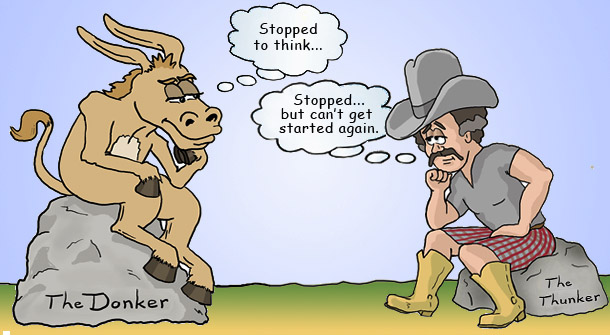
“Thinking is probably the hardest work there is, which is probably why so few engage in it.” – Henry Ford
When was the last time you stopped, turned off everything around you— your mobile phone, iPad, computer, TV, radio and everything else in this hyper-connected, hyper-distracted world—and took the time to just … think? Can you remember? I can’t. I’m always on – 25 x 7.
HOW MUCH THOROUGH THINKING IS THOUGHT?
Last year 107 trillion emails were sent. Each day two-billion tweets are twooted (I know that’s not a word, but I like the neologism connotation) and one-billion pieces of content are posted on Facebook. Not to mention that 7,000 comments per second are posted on Facebook. That’s a lot of “doing” but most of it is “reactive.” Responding to the thoughts of others, who are probably reacting to the thoughts of others reacting to the thoughts of others.
How much thorough thinking do you think was thought in all that doing?
WEIRD SOUND IDENTIFIED
So, I decided to try it. Think that is. The first thing I noticed was weird. Really weird. It was a strange sound that I later identified as …
SILENCE
It was unnerving. To get past the unnerving weirdness, I decided to do some deep, thorough thinking on a problem I was having with a book I was writing.
Unprovided with original learning, unformed in the habits of thinking, unskilled in the arts of composition, I resolved to write a book. – Edward Gibbon
I quickly arrived at a conclusion. It’s much easier to do a lot of stuff than think. But that wasn’t the solution to the problem I was looking for. So I stopped to think again … and immediately ran into another conundrum. Thinking is hard work. I just couldn’t get started again with that deafening silence distracting me.
So, to help the process I decided to track down one of the nation’s foremost visionaries and leading authorities on thinking and marketing, Joey Reiman, and talk to him about the future of thinking, the business of thinking … or the lack thereof.
SLOW DOWN TO SPEED UP
Joey Reiman is the bestselling author of several books, including Thinking for a Living, Success: The Original Handbook, and The Best Year of Your Life … Make It Happen Now! A world-renowned speaker, he provides listeners with the inspiration and foresight needed to become leaders of the future. Next year, Random House will publish Joey’s latest book, Business at the Speed of Molasses, which promises to speed up the ideas revolution by slowing business down so that it may be more purposeful, passionate and profitable.
Joey Reiman has it nailed. He’s won over 500 creative awards in national and international competitions, including the Cannes Film Festival. Joey also teaches a course on “Ideation” as an adjunct professor at Emory University’s Goizueta Business School.
CREATE BIG IDEAS—GET PAID WELL
And … Joey Reiman and his company, BrightHouse, charge between $500,000 and $1,000,000 per idea.
THINKING THE UNTHINKABLE
In 1994, Joey Reiman did something most would think unthinkable. He walked into a meeting with his Board of Directors and announced that he was shutting down his award-winning $100 million a year ad agency, to create an ideas company—to think for a living. His only product would be “ideas.”
“The world was ad rich and ideas poor.” – Joey Reiman
Joey Reiman was convinced that the marketing and advertising world had it all wrong. Their business model—built on the primacy of ideas, but only being paid for the execution of those ideas—was flawed. You see advertising and creative agencies get clients by pitching ideas and giving them away for free. They make their money in the execution of volume production, media spots aired, print ads sold, etc. They don’t get paid for where they create value—the idea. They get paid for the execution of those ideas.
A BETTER IDEA
Joey Reiman had a better idea. He shut down the advertising company, walked away from a $100-million-a-year advertising agency and started a new company he named BrightHouse. It’s considered the world’s first Ideation Corporation.
I wanted to talk to Joey not only about “Thinking for a Living” but also about walking away from a successful $100 million-dollar company. Think about that? It took a real conviction, commitment and some serious …
COURAGE
Steve Kayser (SK): What was going through your mind when you shut down your successful advertising company to start a new company selling ideas? That took a lot of guts.
Joey Reiman (JR): I think everyone has a Joseph Campbell moment at some point in their lives. You’re living what would be called an “ordinary existence” or what I would call doing the “day-to-day job,” and you’re somewhere in your career, and out of the blue, you get a call, just like Luke Skywalker got a call. His was a little more dramatic because he leaves his uncle and aunt to go out and save an evil empire; he got a call to go save a princess and the universe. We all get calls to save ourselves, our families, our companies and even save the world in our own way, but we don’t take the call because we’re sort of set in our ways.
We’ve become routinized, codified and structured and live out a fairly dull existence. But we don’t have to. Those of us who do get a call to do something bigger, better … some higher calling—it’s often to leave your job, to leave your career and follow your calling.
SK: Joseph Campbell called it “Follow Your Bliss.”
ANSWERING THE CALL
JR: Yes, he did. That’s what I’m talking about. I’m keen on teaching my students at Emory University’s Goizueta Business School on not going after a job or a career but a calling.
In 1994, after having a meteoric rise in the advertising industry, winning every possible award (over 500 of them), and really gathering all of the stuff that is supposed to make you happy, I recognized that when you got to the top of the mountain, what you find up there was what you brought with you. And those gold statues actually weighed me down on the hike up. Worse … having the gold statues up there really means nothing.
SELLING YOU WHAT YOU DON’T NEED
That’s when I had a “spear in the chest” moment. I recognized that all of the work I was doing on behalf of the advertising agency was really nothing else than selling people what they didn’t need. Then I started thinking about advertising as the grandest, social experiment in civilization that had failed.
SK: Why?
JR: Because we can’t get enough of what we don’t need. If you have any industry that’s a trillion-dollar industry focused on getting people what they don’t need, then to what end or benefit is that?
I thought the advertising industry had the smartest, most creative people on the planet, and I asked myself, can’t we do better? Can marketing move from marketing to seller to marketing to serve as a healer? This concept was very exciting to me.
MASTER IDEAS
I combed through history; I looked throughout civilization for the biggest ideas that served humankind and I found what I call “master ideas.” Ideas like:
We shall overcome
God is law
For better or for worse
All men are created equal
Very big ideas that were not necessarily factual, but that I recognized as truths.
FINDING THE WHY
The hypothesis was:
Can a company—a marketing company—actually look into other companies as we look through civilization, searching for the instructive sparks of fire that actually gave birth to the company, that gave the company a reason for being alive? To find the”why?”
If you found the DNA of the why, that instructive spark of fire, then you could actually rebuild a culture, wrap genuine value around it, be a more purposeful company and have that purpose drive strategy and tactics.
IDEATION
That notion was big enough for me to recognize a space that nobody had ever gone to in marketing. What I called it was from a word I borrowed from the psychiatric community—”ideation.” Now in the medical community, that’s not a very good word. It means to ruminate about suicide. But the second meaning of the word is the thought process—the thinking process. I combined that in with the notion of a marketing company that would call itself an ideation company that would deliver larger ideas for organizations with the hope that those ideas could help improve public life. And not just in the public perception of the brands, but the company whose advertising we’re supporting. To deliver real results for our clients.
BRIGHTHOUSE—THE EXECUTIVE BRANCH OF THINKING
And I thought “that’s pretty grand,” that should be in the executive branch of thinking. That, of course, would be in the White House. The White House turned into our company BrightHouse with the idea that I would attract the very best thinkers from around the globe in service of the globe and the people living on it.
“Ideals are like stars: You will not succeed in touching them with your hands, but like the seafaring man on the ocean desert of waters, you choose them as your guides, and following them, you reach your destiny.” – Carl Schurz
That was the vision to me years ago. Frankly, it was big enough of a vision. It’s kind of you to call it courageous, but the vision was more enlightening than courageous. It just wouldn’t let go of me. In all callings and in all purposes, when they’re given to you, they’re gifts. Once you acknowledge and hear it, it’s hard not to keep hearing it. Actually, it might take more courage to live a life that has not been lived than to fully recognize the power of the life you have inside you to be lived.
With that enlightenment, I put the word out and some exceptionally smart people came in. I fired all of my advertising clients except for Children’s Hospital, which I didn’t think was the right thing to do. That was 15 years ago, and BrightHouse has enjoyed a great journey helping other companies, other leaders, and other marketers hear their call and take their journey.
SK: By that you mean helping them find their bliss? Find their meaning? Viktor Frankl’s book The Search for Meaning spoke to this journey, but I think Joseph Campbell might have had a little better interpretation of it. Campbell said, “People don’t want to search for meaning—they want to experience meaning.”
JR: Yes. It’s a real search for the rapture of life. People are not necessarily searching for the meaning, but like you just mentioned, Joseph Campbell said they’re in search of the experience of meaning in life.
THE PRIVILEGE OF LIFE?
The privilege of a lifetime is to be who we are. In this society, we are not allowed to be who we are. The freedom to be who we are is often taken away from us at work. We are accountable not to our family, but to the company, and we don’t get to define successes in our terms.
Be who you are; it’s a privilege that’s exclusively yours.
So, what the power of purpose and the power of living our story is, autobiographically or with authority (the power of being the author), is that we get to write our own scripts, and that’s a cool place to be. I mean, I really love my work. I help people to make their lives work, and their companies work better than they do.
SK: So many people give into resistance. “‘I will do it some day. I will, I really will.” But then someday never comes. Resistance beats you. You came to a point in your life—a jumping-off point—where you just said you were going to do it. Was that because you were so comfortable already due to previous successes, or because you were so convinced that it was the right thing for you to do personally?
IT TAKES COURAGE TO BE WHO YOU ARE
JR: It was the right thing for me to do personally. I could not have turned my back on it. In that sense, it was the courage to be who you are in the face of adversity which, at that time, everyone in the world was saying to me;
- You can’t have a company based on ideas.
- Why would you turn your back on the advertising industry that’s been so good to you?
- Why would you give up the accolades, financial rewards and the comfort and security of an industry that’s been proven?
I believed marketing and advertising could do better. Since then, I think I’ve proven that it can.
THE THINKING MODEL—THE FOUR I’S
SK: You created a thinking-process framework for BrightHouse by melding the experiences, processes and thoughts of many great thinkers; from Herman von Helmholtz and Csikszentmihalyi (I’ll never say that one on the radio) to Marshall McLuhan to produce your trademark Four I’s thinking methodology.
THE FOUR I’S:
- Investigate – Gather and analyze quantitative and qualitative data.
- Incubate – Three or more weeks of thinking, daydreaming.
- Illuminate – Big ideas don’t appear. They evolve. Look for the flash, the “AHA” spark of a BIG IDEA that will make a dent in the universe.
- Illustrate – Visually portray and personalize the Big Idea.
How did the Four I’s concept evolve?
JR: I looked through all of the thinking frameworks throughout history. In the Anatomy of Thinking by Herman Von Helmholtz, a Berlin physicist, his framework is designed to suggest that there was an incubation period. He was a 19th-century physicist, so this guy was way-way ahead of his time.
PANDER AND WANDER
When I looked further at the frameworks, especially in American business, there is no narrative time, no incubation time, no pondering or wandering time, so we actually put it into our model.
Albert Einstein was keen on thinking like a child and taking the time to daydream. I think the notion of daydreaming is critical, not only for thinking but critical thinking.
YOU HAVE TO TAKE TIME
To think great thoughts, you have to create them. In order to create an environment for an unconditioned response, you need to schedule time to think, and this sounds like daydreaming to me—space-time or freebie time. That time is when we do our best thinking. It’s where intelligence has thought. The bottom line is that creativity is intelligence having thought. In order to do that, you have to make time.
HERE’S THE FORMULA YOU NEED TO KNOW: 4 I’S > C2
“Four I’s see greater than two eyes. It’s my equation not only for marketing, but living, loving and life.” – Joey Reiman
THE FIVE LAST BASTIONS OF GREAT THINKING ARE?
SK: Most companies would probably look askew at scheduled daydreaming time at work.
JR: Yes. That’s a problem isn’t it. Where to think? I wrote a paper about the last five bastions of great thinking. It’s certainly not the office; it’s the:
- Car
- John (aka toilet)
- Shower
- Church
- Park
Turn off the noise. Listen to your mind. Get out of your cubic-hell. People who work in cubicles have jobs too small for the spirit, and that’s an American tragedy. They’re really cubic-hells.
“Face it, most of us have jobs too small for our spirits. “- Joey Reiman
SK: And that’s still the model you use, the four “I”s?
JR: It’s the methodology we use in order to identify a company’s purpose. What BrightHouse is known for is helping Fortune 100 companies:
- Discover and articulate their purpose
- Tell their story— and by doing so
- Attract relationships and not necessarily customers
BUYER VS. BUY-IN FOCUSED
That’s very different from typical marketing that is focused on getting people to buy things. We’re focused on one thing, and that’s to buy into—not to buy things but to buy into things.
“You don’t buy an iPod, you buy into the Apple philosophy.”- Joey Reiman
This is all predicated on the notion that human beings crave meaning. If you’re not creating meaning, then why should people seek you out? But if you create meaning in a genuine, moral and ethical sense, then people will not just want to break down your door, they’ll want to live with you. I think this is really the most important thing as marketing moves from product-focused to customer-focused and gets into the power of relationships.
OVERCOMING ADVERSITY
SK: Just a wild guess here, but I think you probably ran into some resistance and adversity when you tried to create BrightHouse. What was the biggest hurdle you had to overcome?
JR: I ran into a lot of people that said “No. Won’t work. Who’ll pay for an idea? “
SK: (That’s what I was thinking— boy was I wrong. But then again, refer to the opening cartoon.)
JR: And … “Really , who would pay for an idea? It’s not the way the world works.” That’s when the Coca-Cola Company and Coty Cosmetics stepped forward and tried it. We’ve never looked back. But, even to this day, fifteen years later, I still have to teach people a whole new way of thinking and sell the concept.
Our business is really Thinkonomics, and the work we do at BrightHouse is for visionary leadership. Though I’d like to think that every leader is visionary, you and I both know that’s not the case.
QUARTER CENTURY VS NEXT QUARTER
I search for people who are thinking forward into the next quarter century—not just the next quarter—for their shareholders. I think that stereoscopic vision where you’re focused on both the next quarter and the next quarter century is the kind of leader that hires BrightHouse.
“I paid Joey Reiman $1 million just to think!” – CEO Jim Adamson of the Advantica Restaurant Group
SK: Selling value. Selling the value of an idea. You actually charge $500,000 to $1,000,000 per idea?
JR: Yes. I think if you were to ask any of those CEOs “was it worth it?” they’d say yes. Many have been asked. There is a real sense of great value delivered. And value, in return, should be received for great ideas.
QUESTIONS CAN BE MORE IMPORTANT THAN ANSWERS
It’s something I feel strongly about and stand for. It’s just like grammar school. You don’t get credit for the answers; you get credit for solving the question. The questions could be a lot more important than the answers. These questions lead you to deeper thinking toward thoughtful solutions. We don’t need quick solutions. A quick solution often doesn’t work. Thinking more deeply, thinking more thoughtfully, thinking more long-term, takes a longer period of time, but it has greater generative effects.
STOP DOING—START THINKING
We need to stop the doing and start thinking.
SK: Yes. Agreed. But it’s a little difficult for some managers and leaders to think you’re working when you’re at your desk thinking. For example, I tried that once.
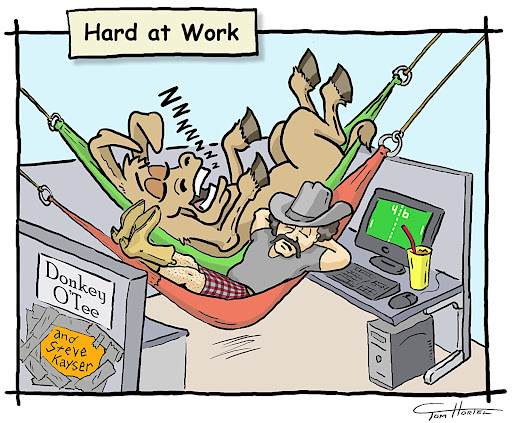
And the boss caught me deep in thought, which I re-positioned as “I was hard at work.” My reward? A retro-pay adjustment. That belies the flawed notion of seemingly “doing something” means your working.
“Never mistake motion for action.” – Ernest Hemingway
Was there a point when you were creating BrightHouse and the “Thinking for a Living” concept that you questioned whether you could really pull it off?
JR: I’ve had times at BrightHouse where we took a step backward. I remember working with Delta Airlines and they wanted us to go back to doing their advertising. There was a lot of money on the table—a very lucrative opportunity. I did it, took the money, and it was a big mistake. So yes, I did question myself.
SK: How do you sell ideas? I know you can sell ideas with volume production and execution, but just the idea itself? It sounds to me like the epitome of the definition of a “Complex Sale.”
JR: I couldn’t sell something unless I believed in it—passionately. It’s very similar to consultants. There are two kinds of consultants: the experts and the advisors. The experts I can get in the phonebook. But the advisor is different. In past times, the king would rely on his advisor, not the expert. The advisor was always stacked above everyone else next to the king.
That’s what we sell at BrightHouse. I’m not selling expertise. Those in advertising, they’re experts at communicating. We’re advisors. I do think people will pay for a point of view because anyone can have a point of view.
IMPORTANT
But to have a:
- Point of view
- Noble purpose
- Live that purpose
- Look at the world through a prism of purpose that magnifies everything
… that people will pay well for … very well; millions of dollars.
SK: What do you look for in a person when BrightHouse hires a thinker?
JR: Well I used to put out a “For Hire” sign, but it was spelled “higher;” the notion being that we were looking for people with a higher form of thinking. Beginning at BrightHouse is pretty hard. There are some interviews, a number of case studies, a number of cases, and I don’t look for anything close until I look into the eyes of the person.
I look for passion because I can teach anyone just about anything, but I can’t teach will. I need will much more than I need skill. If I see will in your eyes, I don’t care what your skills are like; that can be taught. But the will is a gift. That’s what I look for.
“Will is more important than skill. Thinking can be taught. But will is a gift.” – Joey Reiman
SK: Who are some of the luminary thinkers you’ve attracted to BrightHouse?
JR: We’ve created the largest and most distinguished Luminary Network on the planet. We engage these top scholars and expert advisors on all of our projects to provide divergent, unprecedented thinking and insights. It’d be easier if people just went to our website and clicked on “Luminaries” to check them out. But they include:
- Dr. Philip Kotler, Distinguished Professor of International Marketing at the Kellogg School of Management
- Dr. Edgar Mitchell, the sixth astronaut to walk on the moon and the pilot of Apollo 14
- Robert Watson, former CEO of the Salvation Army
- Horst Schulze, founding president of the Ritz-Carlton Hotel Company
- Dr. Kary Mullis, the 1993 Nobel Prize winner in chemistry
- Dr. Allison Druin, Director of the human-computer interaction lab at the University of Maryland
- Sam Keen, noted philosopher and author. Bill Moyers profiled him in the 60 Minutes PBS special “Your Mythic Journey.”
Among many others.
SK: Back to thinking for a living. What do you think of a genius-type like Nikola Tesla who got the call to change the world through his inventions? He did change the world but died alone and penniless, mainly because his call didn’t include business smarts. He believed himself to be a “Planter of Seeds,” of great ideas for the benefit of our world. Thomas Edison on the other hand invented for one purpose: to sell a product. If he couldn’t sell it, it wasn’t worth inventing. The businesses he created still exist today, and he died fabulously wealthy.
JR: When so many artists and great inventors get the calling, there is not a checkbook. Larry Barkin said, “Infinite patience produces immediate results.” What he meant by that is that if you have a calling of something great, you need to heed it. Edison beat Tesla in sales. Plain and simple. It was his call. Not Tesla’s. But I think if people follow their dreams, try to live them every day, then their dreams will come true. Those of us who have them every day get to live a better life than those who are living without the dream, which is, I think, a nightmare.
Aspirations are different.
What do you aspire to? Is it money? Will you be happy with money? I don’t think most are. Life isn’t printed or lived on dollar bills even though a lot of people think it is. I know a lot of unhappy rich people. I know more happy people without a lot of money but have great hearts, and the dream in their heart is what sustains them.
I wish for everyone to be a Tesla and not an Edison.
SK: If Tesla were alive today, would it be any different?
JR: Yes. Because he’d be working with BrightHouse. His soulful passion would be nurtured and rewarded.
Passion + Purpose = Profit
###
About Joey Reiman
As founder of BrightHouse, the world’s first Ideation Corporation™, Joey Reiman decided to offer companies a revolutionary way of thinking that promised to change the way they did business forever. Over the past 25 years, Joey has emerged as one of the nation’s foremost visionaries and leading authorities on thinking and marketing. He is the bestselling author of several books, including Thinking for a Living, Success: The Original Handbook, and The Best Year of Your Life … Make It Happen Now! A world-renowned speaker, he provides listeners with the inspiration and foresight needed to become leaders of the future.
Contact:
[email protected] Atlanta 790 Marietta Street P: 404-240-2500 Atlanta, GA 30318 F: 404-240-2501

I was interviewed by Avil Beckford the founder of Ambeck Enterprise & The Invisible Mentor, a spot where professionals educate themselves with expert interviews, biographies, book summaries/reviews, and tips and resources. She asked me a fairly simple question that caused me immeasurable distress.
Avil Beckford:
An invisible mentor is a unique leader you can learn things from by observing them from afar, in the capacity of an Invisible Mentor, what is one piece of advice that you would give to readers?
Now why would that question cause distress? I don’t consider myself a unique leader. Don’t think I have ever even played one on the radio. But, if I were to slip into the part I thought to myself that the advice should bridge both the life of business and the business of life. I had to do a memory deep-dive to mine some gold. Advice that was unassailable, invincible, incontrovertible.
TWO SETS OF THREE
Steve Kayser: What is one piece of advice I would give? The advice I stole from John Wooden, it’s called two sets of threes.
- Don’t lie.
- Don’t cheat.
- Don’t steal.
AND
- Don’t complain.
- Don’t make excuses.
- Don’t whine.
That’s advice that works in any situation. Anywhere. Anytime.
WHO MENTORED WOODEN?
Here’s the interesting thing about that advice. It was passed on to John Wooden by someone else.
Any ideas?
FOOTSTEPS IN THE SANDS OF TIME
His father.
John Wooden went on to become the greatest basketball coach to ever live. And what did he do with that advice besides live it? He passed it on to all the young athletes that played for him. The two sets of three are his footsteps left in the sands of time.
That’s a true mentor.

I’m a jerk. And might even be a Jerkaholic. Least I’ve been told that by more than one person lately. Undeservedly so I believe.
Introspection Needed
But sometimes you need to do a little introspection – take a timeout – to see if what the prevaricating, blasphemous, smellfungus ninnyhammer all-foam no-beer mooncalves are calling you just might be true.  Introspective Break Over
Introspective Break Over
That’s long enough. Not interested in paralysis by analysis. They’re wrong. Completely. Mostly completely. Mostly. Okay, I might have been a little off base once when I gave out my Radio co-host’s personal cellphone number on the air – saying it was mine – and anyone that wanted to could call me at any time, 24 x 7. And happened to mention we had forty well-paying jobs available that they might get the inside track on by calling me as much, and as often, as possible – because we were looking for persistence and stick-to-it-iveness in job candidates. That’s not really jerkaholic material. That’s just a radio host trying to generate buzz.
That’s not really jerkaholic material. That’s just a radio host trying to generate buzz.
True…
I might have been a little jerky when a good friend asked me to watch his house for two weeks while he was out of the country on vacation with his wife and children. And I took that time to go into his house, take his size 12 expensive dress shoes and replaced them with identical ones … size 10 1/2.

Benny Hill Would Have Understood
Does no one remember Benny Hill? That was a Benny Hill moment. I commiserated and empathized with my friend for two weeks. He was sure he was dying of some circulatory disease that was painfully swelling his feet and causing him immense problems walking – and soon after that, working. So he had to take off work. And watching him walk? It was a Benny Hill of a Mona Lisa. What a hoot. All-time classic. He was quick as a corpse. Who would have ever believed that he’d take it so seriously? He got all psychosomatically sick. I know this because he couldn’t work … until I told him what I’d done. What a psychosomatic man.
But he wasn’t upset at all. I know this because if he were, he would have said something and he hasn’t talked to me since.
A Moaning Lisa
And who would have ever believed his wife (Lisa, ironically enough) would’ve gone so ballistic on me?

Have you ever seen the show SNAPPED? The show that features women going ballistic against males they think deserve it? That was my buddy’s wife. Lisa. She stalked me. I had to get a restraining order against her. Was there any cause for that? Just because her husband couldn’t work and they couldn’t make their mortgage payments and had to sell their house? And truth be told, they didn’t really have to sell their house like they blamed me for. I hooked them up with a banker friend, and they worked some kind of deal out with their bank to just take the house back. Do you know how hard it is to sell a house in this market? But did I get any thanks for that? Noooo. So who’s the jerk there?
Project Recovering Jerkaholic
However, upon some honest introspection, I tentatively concluded there might be a nano-smidgen of almost imperceptible truth to the “jerk” allegations. I decided to speak with Guy Kawasaki on the Radio show to see if he could help me out.
A Jerk in Business & Life
“Some cause happiness wherever they go, others whenever they go.”
The first thing he recommended was trying to be more likable, because if my friends (ex-friends now) were telling me I was a jerk, imagine what my business contacts be thinking? So …
Becoming More Likable
I told Guy I was hoping some of the info in his book “Enchantment: The Art of Changing Hearts, Minds and Actions” would help prevent me from going to Jerkaholic rehab. ‘Did he think he could help me?”

GUY KAWASAKI: If I can help YOU I need to charge more for my book!
STEVE: My friends often call me prickly – without the “ly.” They said they were considering a jerk intervention on me. They’re wrong of course. But say they weren’t, how could someone be less of a jerk and become more enchanting?
GUY: Let’s start off with the basics, assuming some people don’t know they have to be likable. You would think that would be obvious but based on the people I know, it isn’t. Some people actually criticize the beginning of my book saying that it starts off too basic, but you know what? If a majority of the people in the world were likable and trustworthy, would have skipped those first two chapters. It’s just not so. The start of likability is …
A Smile
You need to smile. This smile means you not only use your jaw but you use your eyes. The great smilers of the world have crow’s feet. Crow’s feet is good, Botox is out. You want to have crow’s feet because it adds that extra sparkle to your smile.
STEVE: I think I have that one nailed. But … I don’t really trust people so much that smile, I think they’re up to something. I’ll probably skip that step. The other thing is the eyes. All my friends say I have serial killer eyes. I don’t know where that comes from but…
Dress for a Tie
GUY: The second thing is you need to have the proper dress. You shouldn’t dress way above your audience because they might think you’re trying to put them down, you make more money or have better taste. You shouldn’t dress way under them because then they’ll think ‘this punk thinks he can wear a t-shirt and jeans when we’re in business attire because he has no respect for us.’ You should dress as peers; try to dress approximately the same as how they are dressed. Dress for a “tie.”
STEVE: See, I get this. But this is beginning to look like a challenge more for others than for me. People never dress for a tie with me. I’m a Kommando Kilt-Wearing King Kayser. They should also try to walk a mile in my kilt every once in a while. They’d realize how utilitarian and classy a manly Kilt can be. If more people wore kilts I’d probably be recognized as the Dana Carvey of the business world.
Oddly, There was dead air at this point … no idea why.
GUY: The third factor is the perfect handshake, and this is where I put in the 20 variables formula for the perfect handshake that came from the University of Manchester. So no tax dollars from the U.S. were wasted on that. The gist of it is firm handshake, cool, dry, smooth hands, make eye contact, use the smile with 2 muscles, about 2 seconds long, and not too close, not too far. Those are the keys.
STEVE: Got that one nailed too. I’m pretty good with the handshaking stuff.
GUY: The next thing I’d advise is to use the right words when speaking to people. Words are the facial expression of your mind. They communicate your attitude, personality and perspective.
Big Words Seldom Accomplish Big Deeds – Danish Proverb
Your words need to be short, sweet and swallowable. Common and unambiguous. The wrong words can immediately give the wrong impression.
STEVE: No problem. Whenever I talk to the prevaricating, blasphemous, smellfungus ninnyhammer all-foam no-beer mooncalfs that have been calling me a jerk … it’s short, sweet and palatably unswallowable.
Dead Air … Again?
GUY: A journey of a thousand miles requires at least ONE step.
###
Guy Kawasaki has a lot more to say about being likable and becoming “enchanting” in his new book. Things like accepting others, projecting your passion and purpose, and creating win-win situations.
Let’s Make this World a Little Better, One Jerk at a Time
Now … I’m a recovering jerkaholic work in progress. So if you see me out and about, and you’re not a prevaricating, blasphemous, smellfungus ninnyhammer all-foam no-beer mooncalf … strike up a conversation! Let’s chat! You’ll be participating in “Project RECOVERING JERKAHOLIC” and making this world a little bit better … one jerk at a time.
##############################

Ever Want to See a Miracle?
A real one? Come with me. We’ll go south on I-71 in Ohio until we cross the Brent Spence Bridge into Kentucky. Then we’ll take the 12th street exit and head over to the intersection of West 19th and Euclid in Covington, Kentucky. We’ll probably get stopped at the light (I always do). Now take a left into a little driveway at the stoplight. You’re now at 325 W. 19th Street, the Conductive Learning Center of Greater Cincinnati [clcgc.org].
It doesn’t look like a place miracles occur, but what place does?
It’s an older brick building with converted apartments on top of it. Get out. Look around. Miracles are made here every day. Real miracles. Verifiable ones. Ones that intimately touch lives and make meaning for anyone blessed enough to witness the work being done here. The students attending are children from 1-32 years old. Most are between 2-16 years of age.
And these are the things miracles are made of.

But First… What is Conductive Learning?
Well, there’s the official definition;
“Conductive education is an intensive, multi-disciplinary approach to education, training, and development for individuals with cerebral palsy, spina bifida, strokes, and other motor challenges.”
Then There’s My Definition:
It’s a combination of intense physical therapy, repeated physical movements of damaged bodies and body parts aimed at connecting those movements to a useful life function, such as dressing, tying your shoes, cleaning yourself and many other everyday living issues those with neurological-based motor impairments struggle with daily. By repeating these physical moments often and long-term, the idea is that the science of neuroplasticity will kick in and open up new neural pathways to enable the brain to rewire itself -and the body to function. It uses a collection of exercises repeated rigorously and rhythmically. Little exercises that can produce big results over time regarding changing their brains – and changing the ways their bodies respond.
Miracles are Hard Work
But the real key is that the intense physical therapy is delivered with healing hands, loving care and hope. Provided by people that have to physically pick up these wounded bodies and work their body parts for them, ceaselessly — days, months and even years on end. It would be demanding physical work for any person.
But each day at the Conductive Learning Center is an exercise in hope.

And each day a miracle is created and delivered.
What Kind of Miracles?
The best kind. Some of these kids can not hold their heads up. Some cannot walk. Some cannot talk. Cannot move their bodies willfully in anyway.
But, at the Conductive Learning Center, I have seen miracles. I saw a little 5-year-old boy roll over. Not much of a miracle you say? He was never supposed to be able to do it. He was locked in a frozen state. And then there’s the little 8-year old girl that was initially diagnosed to be paralyzed from the neck down before birth; then it was updated to below the waist after birth. The parents of this little girl, when they realized the severity of their daughter’s condition, researched how best to help her – outside traditional channels. They eventually landed on Conductive Education as a therapy and rehabilitation method.
Miracles Aren’t Covered by Insurance
But, Conductive Education schools are rare. There are only 35 schools in the United States and… each one was started by parents to help their children. Why? Think about it. Miracles aren’t typically covered by insurance. The closest Conductive Education school the parents initially found was a school in Grand Rapids, Michigan. Quite a trek from Cincinnati. But much to their synchronistic amazement, they soon learned about the Conductive Learning Center of Greater Cincinnati.
And that made all the difference in the world.
The little girl is blessed to live in Cincinnati. Here they have the world-renowned Cincinnati Children’s Hospital which has performed over 20 brain and spine surgeries on her. But the parents needed more for their little girl if she was ever truly able to have a shot at walking. She needed more intensive physical therapy and manipulation that just wasn’t practical in any school setting. The typical school allows for 30-90 minutes of therapy a month. Insurance companies usually cover 1-hour per week in therapy. Not enough. That’s not nearly enough to make any progress. The Conductive Learning Center works with the students 5.5 hours per day. So, the parents enrolled her when she was 2-years old.
The Miracle of Lourdes at 9 AM
If you happen to be near the school around 9 am, some days you will see the 8-year-old girl I’ve talked about walking up the wheelchair ramp into the school. If you do, you just witnessed a miracle. A little child who may have never walked, who may have been paralyzed from the neck down, who spent the last six years being worked on by kind, loving, healing hands for five and a half hours per day… you’ll see her walking. And talking. And smiling. And laughing.
What’s this little girl’s name? Oddly enough Lourdes–. And she is a miracle child.
How do I know this?
Because Lourdes is my child.

And my wife and I will be forever indebted to the wonderful healers at the Conductive Learning Center of Cincinnati. Lourdes is just one example of children and adults lives being changed by this school. Like I said when I started this story if you want to see a miracle…a real one, follow my directions to The Conductive Learning Center of Greater Cincinnati.
###
If you know someone that may benefit from Conductive Education (Cerebral Palsy, Spina Bifida, Stroke, Traumatic Brain Damage, and other neuro-motor issues), please contact Kelli Flannigan at 859-261-2333 or [email protected]. They offer free assessments and free consultations. Or, feel free to contact me.
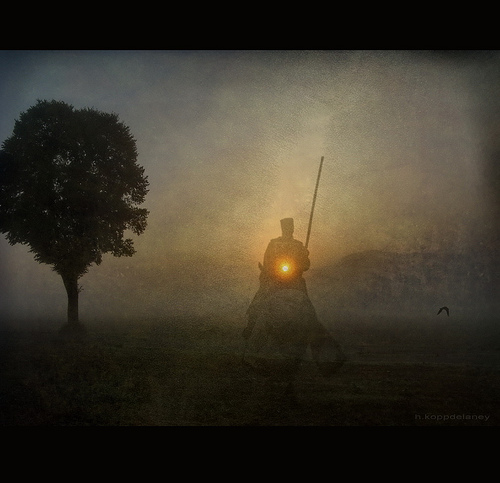
NO
Too short. Too fat. Too dumb. No Imagination. No creativity. No skills. Face for radio. Voice for print. Too macho. Too Wimpy. Too lady-like. Too butch. Too bald. Too much fuzzy hair. Wrong color. Wrong race. Wrong sex. Out of his depth in a parking lot puddle. Neanderthal brain in a Cro-Magnon body. And … just who in the “H-E-doubLe-hockey-sticks” do you think you are?
NO
Ever heard of any those no’s? I’m not saying I’ve heard them all … but even if I had, would I tell you?
NO
What would the world would be like right now if everyone folded after being told no? It’d look something like this. 
NO MECHANICAL ABILITY
He forgot to put a reverse gear on his first automobile. This was after his first two businesses failed. – Henry Ford
NO SCIENTIFIC BREAKTHROUGHS
Didn’t walk until he was 4 years old. Didn’t speak until he was 7 years old. Flunked math. His teacher told him “You will never amount to anything!” His parents were told he might be mentally retarded. ( I share this in common with big Al) – Albert Einstein
NO FILM-MAKING TALENT
Born in Cincinnati, Ohio, this young man aspired to be a film-maker (some people might not know this, but it’s fairly challenging to have a film-making career in Cincinnati). He applied to U.S.C. film school and was rejected – three times. So he taught himself. – Steven Speilberg
NO ACTING TALENT
She was considered a failed actress. At best a B-grade wannabe. Her drama instructors told her to try another profession. Thirteen Emmy nominations, four wins and a Lifetime Achievement Award from the Kennedy Center Honor later … maybe they were wrong? – Lucille Ball
NO BEAUTY – TOO UNATTRACTIVE
She was dropped from a film contract at 20th Century Fox because she was “too unattractive.” One of her agents said she should really consider being a secretary. – Marilyn Monroe
LET THERE BE NO LIGHT
When he was a boy, this young man was told “You’re too stupid to learn anything.” – Thomas Edison, inventor of the light bulb and a gazillion other things.
NO MAGIC
When he was younger he was fired by a Kansas City Star newspaper editor for lacking creativity. But he had this friend – in his mind – who was sorta mousey, and that helped him succeed later in life. In fact he succeeded so well he bought the newspaper that fired him. – Walt Disney
NO MORALS
He was tried and sentenced to death for being an “immoral corrupter of youth.” – Socrates
NO GAME
As a sophomore he was cut from his high school basketball team. No talent. Too ordinary.
“I have missed more than 9,000 shots in my career. I have lost almost 300 games. On 26 occasions I have been entrusted to take the game winning shot, and I missed. I have failed over and over and over again in my life. And that is why I succeed.” – Michael Jordan
NO MUSIC
As a musical composer his teacher called him “hopeless.” But, when totally deaf, he composed an Ode that still brings much Joy to many listeners hundreds of years later. – Beethoven, composer of “Ode to Joy,” and a couple other tunes along the way.
MORE NO MUSIC
He tried out for the glee club and failed. He was fired from the Grand Ole Opry after just one performance. The manager told him, “You ain’t goin’ nowhere, son. You ought to go back to drivin’ a truck.” – Elvis Presley
MORE MORE NO MUSIC
Turned down for a recording contract by Decca Records because “Don’t like their sound … and guitar music is on the way out.” – The Beatles
NO DANCE
After his first film audition the testing director noted, “Can’t act. Can’t sing. Slightly bald. Can dance a little.” – Fred Astaire
NO COMEDY
The first time he walked out on stage he froze, then was booed and jeered off the stage. – Jerry Seinfeld
NO WORLD WAR TWO VICTORY?
A poor student – failed the 6th grade – with a speech impediment. Couldn’t learn. Couldn’t speak. – Winston Churchill
NO ART
In his entire life he sold just one painting. And that was to a friend – for a pittance. – Van Gogh
NO CARTOONS ??????
Now of all the no’sin the world, this might possibly be the most devastating from my perspective. Every cartoon he submitted to his High School Yearbook staff was rejected. So he applied to Walt Disney, and was promptly rejected. Lucky for him a Snoopy little dog inside him told him not to quit.
Sometimes I lie awake at night, and ask, ‘Where have I gone wrong?’ Then a voice says to me, ‘This is going to take more than one night.’ – Charles Schulz
NO WIZARDRY
She was penniless, depressed, divorced, on welfare, and trying to raise her child while going to school and writing a novel. That’s a whole lot of no’s going on (to paraphrase Jerry Lee Lewis). It worked out though. She’s one of the richest people in the world now. – J.K. Rowling,author of Harry Potter
AND FINALLY … NO AMERICA?
Born into poverty, he was the ultimate winning loser.
- Went to war a Captain and came back a Private. (I did that too, but I would never let anyone know.)
- Borrowed money for a business and went bankrupt. Started another business and failed again. Had a nervous breakdown.
- Ran for State Legislature – and lost.
- Sought to be Speaker of the State Legislator – and lost.
- Ran for Congress – and lost.
- Ran for the United State Senate – and lost.
- Was the Vice-Presidential nomination of his party – and lost.
(This is wearing me out – writer’s note to himself.)
FINALLY …
… Was elected President of the Unites States of America. – Abraham Lincoln Anywhere along the line Lincoln could have said yes to the no’s and disappeared from history. He didn’t. After each no he picked himself up and gave it another go. With no real formal training he became a lawyer and perhaps one of the greatest leaders and writers of all time. His letter to Congress, one month before the Emancipation Proclamation,is a timeless, elegant call for freedom for all mankind – for all history. Who thinks or writes like this anymore?
The dogmas of the quiet past, are inadequate to the stormy present. The occasion is piled high with difficulty, and we must rise — with the occasion. As our case is new, so we must think anew, and act anew. We must disenthrall ourselves, and then we shall save our country. Fellow-citizens, we cannot escape history. We of this Congress and this administration, will be remembered in spite of ourselves. No personal significance, or insignificance, can spare one or another of us. The fiery trial through which we pass, will light us down, in honor or dishonor, to the latest generation. We say we are for the Union. The world will not forget that we say this. We know how to save the Union. The world knows we do know how to save it. We — even we here — hold the power, and bear the responsibility. In giving freedom to the slave, we assure freedom to the free — honorable alike in what we give, and what we preserve. We shall nobly save, or meanly lose, the last best hope of earth. Other means may succeed; this could not fail. The way is plain, peaceful, generous, just — a way which, if followed, the world will forever applaud, and God must forever bless.
IMAGINE THIS – NEVER WRITTEN
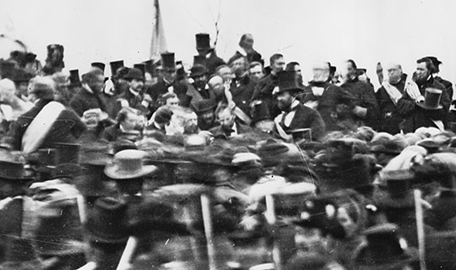
President Lincoln, hatless, is pictured in the center of the platform moments after delivering the Gettysburg Address. It is the only known photograph of Lincoln at Gettysburg. – Libray of Congress
Four score and seven years ago our fathers brought forth on this continent, a new nation, conceived in Liberty, and dedicated to the proposition that all men are created equal. Now we are engaged in a great civil war, testing whether that nation, or any nation so conceived and so dedicated, can long endure. We are met on a great battle-field of that war. We have come to dedicate a portion of that field, as a final resting place for those who here gave their lives that that nation might live. It is altogether fitting and proper that we should do this. But, in a larger sense, we can not dedicate — we can not consecrate — we can not hallow — this ground. The brave men, living and dead, who struggled here, have consecrated it, far above our poor power to add or detract. The world will little note, nor long remember what we say here, but it can never forget what they did here. It is for us the living, rather, to be dedicated here to the unfinished work which they who fought here have thus far so nobly advanced. It is rather for us to be here dedicated to the great task remaining before us — that from these honored dead we take increased devotion to that cause for which they gave the last full measure of devotion — that we here highly resolve that these dead shall not have died in vain — that this nation, under God, shall have a new birth of freedom — and that government of the people, by the people, for the people, shall not perish from the earth.
JUST SAY NO TO NO
 Abraham Lincoln said no to no. All the others above did too. Had they not, they would all be unknowns. And what type of world would this be right now?
Abraham Lincoln said no to no. All the others above did too. Had they not, they would all be unknowns. And what type of world would this be right now?
WOULD THEY HAVE KNOWN YES WITHOUT NO ?
My great concern is not whether you have failed, but whether you are content with your failure. – Abraham Lincoln Our greatest glory is not in never falling, but in rising every time we fall. – Confucius Success is the ability to go from failure to failure without losing your enthusiasm. ~ Sir Winston Churchill Ambition is the last refuge of the failure. – Oscar Wilde
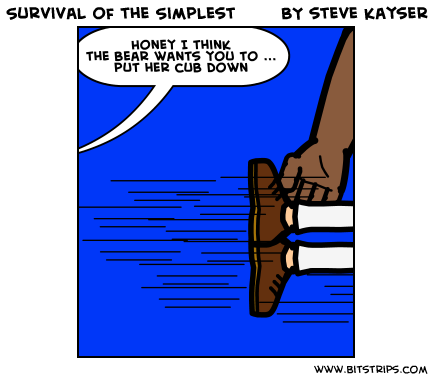
DANGER
When death, danger or the IRS beckons, life gets real simple, real quick. Every sense amplifies. Every second lasts a year. All attention finely focuses. Yes? It’s because of this universal principle…

Someone throws a rock at your head. Is there a long thought process? No. It’s instinctive, intuitive. Our brains are genetically hard-wired to focus only on the data that’s important for survival. All else is tossed out. Things get real simple, real quick.
“Fix gaze on rock, if it keeps coming, duck!”
That’s called a “gaze heuristic,“ an evolutionary shortcut that evolved over millions of years. It saves the brain from making a Gabazillion (That’s “gabazillion with a capital “G,”) mathematical calculations. Your brain gives you one quick, practical, rule-of-thumb to act on to save you from getting a rock headache or giving you an all expenses paid trip down the river Lethe.
Why is This Important – Besides Being a Handy-Dandy Life-Saving Trick?
Bill Schley, author of the bestselling “Why Johnny Can’t Brand,” has a book called, “The Micro-Script Rules: It’s Not What People Hear … It’s What They Repeat.” Bill’s book taps our brain’s built-in heuristics, or problem-solving rules-of-thumb, to help you craftily break through and powerfully communicate ideas, so people won’t just hear them … they’ll repeat them. Bill details how five finely conceived, crafted and connected words can be more powerful than 5,000.
Message Madness
Sounds easy. I mean, it’s an evolutionary thing, right? Well, easy it’s not. How do you standout and breakthrough in today’s world where Google indexes over 1.5 trillion URL’s? Where 300 billion messages bombard us — per second? And they’re just not messages. On the whole, they’re pretty crappy messages — no?
Most are loaded with self-serving corporate gobbledygook that habitually over-delivers less than zero value. Too much information. Too many words. We’re fighting an exploding global pandemic of message madness where memorability is memorably absent.
Message madness disease only affects us humans – mostly writers and business communicators. “The Micro-Script Rules” can help you take the madness out of your message and put meaning into the madness of 1.5 trillion URLS and 300 billion messages per second.
So What Are Micro-Scripts?
Micro-scripts are magic words and phrases that kick gluteus-maximus in any battle of ideas. Simple. Clear. Repeatable. Memorable. Easy to instantly memorize. Short. Did I say Short?
Let me say it again. Short. Usually 3-8 words. Micro-Scripts work because people love to repeat them as much as hear them. And if they repeat them … they’re spreading your idea or promoting your business for you.
What They’re Not
Sound bites.
What They Are
Idea-bites. That’s right, idea bites that deliver value and message memorability. Here’s a couple. Can you finish them?
Examples:
If it does not fit, you must ____
Pork, it’s the other ____
Friends don’t let friends _____
1,000 songs in your _____
What happens in Vegas _____
What happens in Cincinnati _____ (Answer at end of article … guess right and receive a complimentary copy of “THE MICROS-SCRIPT RULES.”)
The milk chocolate that melts ______
Dr. Scholls Shoes … are you _____?
Why Do They Work?
According to Bill, “Cognitive psychologists say that people love micro-scripts because our brains love to simplify, and we love communicators who help us simplify. We evolved this way for survival. We zip up whole stories and impressions into compact files and make short “rules of thumb’’ for quick retrieval at the moment of need.
In today’s world, stories are more important than ever, but you need to know how to tell your story in about one line or less. The right five words will always beat 5,000. Marketers will tell you this is a big reason we like brands so much. They help us simplify, too.”
How to Create Micro-Scripts?
You can’t template the process to create a Micro-Script, but ideas, patterns and similarities emerge. According to Bill, “The pattern we most often see is a simple, two-part logic equation – a kind of balance where value A is related to value B to form a complete idea. For example,
Problem A has Solution B
If A, then B – “What goes around, comes around.”
A causes B – “No pain, no gain.”
A saves B – “Better safe than sorry.”
A mirrors B – ‘If guns are outlawed, only outlaws will have guns.”
And the single, big metaphor version…
A is B
“Laughter is the best medicine.”
“Honesty is the best policy.”
“Love is blind.”
5.2 Words
Bill’s research also revealed that the most memorable lines of all-time delivered powerful and moving ideas in an average of 5.2 words – 5.2 words.
Can you imagine?
What are we going to do with all the spare words we know?
###
The answer to Cincinnati question? If you know, let me know. I think it’s “nothing.” But… I’m not sure.

They shall grow not old, as we that are left grow old
Age shall not weary them, nor the years condemn
At the going down of the sun and in the morning
We will remember them
– From “For the Fallen” by Laurence Binyon
A salute to you, brother Chuck.
Hard to believe it’s been so long. We were so young.
I looked at your picture yesterday. You haven’t changed.
You never will.
I will remember you.
Always.

By Steve Kayser
I’ve done a lot of interviews with some great thinkers, business leaders, and writers over the last several years. One question I love to ask – no matter what the topic – is,
“Who influenced you?”
The Secret Sauce
Why? Mainly because I’m nosy. Aren’t you? Isn’t everyone looking for the secret sauce of success? I’m especially curious about great writers and storytellers. How did they learn the craft? How did they hone it? Who influenced them?
And you know what? The answer to those questions usually ends up being the most revealing, illuminating, authentic… and fun. And there’s always a great story involved. Is it because once you reach a certain level of success you look back and see how blessed you were at a certain time in your life to run across that certain person or book? Or you experienced something unexpected that set you on your life path? Or later, when you think back, it seems like it was a complete fluke, an accident of fate? But, without it they know – there would have been no success – or at the very least it would have been a completely different type of success.
Ask
It was no different when I asked Dr. Ken Blanchard, author of 50 books, including the iconic “One Minute Manager,” the question…
Who Influenced You?
Steve Kayser: You’ve sold 20 million copies of your books and the One Minute Manager is revered in business circles and still being used as a guide almost 30 years after publication. Who or what influenced your writing style?
I ask all successful writers and storytellers that I’ve had the opportunity to interview that question – who influenced you – because they all seem to have something in common. Clear, concise, easy-to-understand-and-read writing style. No complexities. Eloquent, elegant, sophisticated and simple style – yet deceptively complex with deep knowledge embedded – if you look for it.
So who influenced you as a writer?
The Value of the Parable
Ken Blanchard: Well, I think Spencer Johnson and I influenced each other. I met Spencer at a cocktail party in 1980. He wrote children’s books, The Value of Courage, the ValueTale series, Story of Jackie Robinson, The Value of a Sense of Humor, The Story of Will Rogers, just a wonderful series of stories for kids. I had just written a textbook. I was a college professor at the time. My wife bumped into Spencer at the party and brought him over and introduced us. She said,
“You guys ought to write a children’s book for managers. They won’t read anything else.
Steve Kayser: Hilarious, a children’s book for managers. So true. Even more so today than it was back then.
A One-Minute Scolding
Ken Blanchard: Yes, so, he was a children’s book writer, and I was just a storyteller. He was working on a one-minute scolding on how to discipline kids at the time. So I invited him to a seminar of mine. Spencer sat in the back at the seminar and laughed out loud. He came running up at the end of it and said,
“Forget child learning. Let’s go for The One Minute Manager.”
Steve Kayser: How did you decide to go with the parable storytelling style?
Ken Blanchard: Well, we thought about that – the best way to do it – and that’s when it became interestingly magical. We talked and discovered our favorite books at the time were Jonathan Livingston Seagull, The Little Prince and Og Mandino’s The Greatest Salesman of Them All. All similar in style, and of course Jesus taught by parable and story in the Bible.
Spencer said,
“We ought to just write a parable, write a story that sells.”
Seek, and You Will Find
So we created a story around this young guy seeking out an effective manager to teach him how to be one. And he wanted to work for one. In his seeking, he uncovered three secrets to being an effective manager. We came up with the belief, and I still believe this, that people can’t remember more than three or four things at a time. We wanted them to remember the secrets so they could use them in their businesses.
Steve Kayser: So without …
- A chance meeting at a cocktail party
- Your wife introducing you to Spencer Johnson, author of a series of Children’s stories
- You two hitting it off personally, and both having a love for the parable…
… There would have been a book called, “The One Minute Scolding.” But there would not have been the “One Minute Manager.”
Ken Blanchard: Yes. That’s right.
Do the Work
There was one last critical element not mentioned. You can knock on the door to success, but without acting, actually doing the work to make your dreams come true and walk through that door – there will be no success.
Dr. Blanchard did the work. And still does.
And You
One person, place or event can influence and alter the course of your life forever – at any age.
Who Influenced You?
Who was that someone for you? Who influenced you?
Have you thought about it? If so, have you thanked them?
Have you tried to become that person for someone else?
###
Steve Kayser is the author of “Acceptance Bridge: Crossing the Great Divide“; “The Greatest Words You’ve Never Heard: True Stories of Triumph,” an award-winning writer, former radio host, public speaker and the Founder of Kayser Media – which specializes in PR, Marketing & Media Relations. His eclectic (some say bizarre) approach to PR, Marketing and Media Relations has been documented in a marketing best practices case study by MarketingSherpa, profiled as a “Purple Cow,” by author Seth Godin, and featured in the best-selling books, The New Rules of Marketing and PR by David Meerman Scott and “Tuned In: Uncover the Extraordinary Opportunities That Lead to Business Breakthroughs” by Craig Stull, Phil Myers, and David Meerman Scott.
In addition, Steve is the co-author of “Margins and Missions… Not Moonshots: Pathways to a Better U.S. Higher Education,” and was editor, designer, and producer of “The Surgeon and the Spirit: A Panoramic View of a Journey in Academic Medicine.”
Steve has also been featured in the following publications: A Marketer’s Guide to e-Newsletter Publishing, Credibility Branding, Innovation Quarterly, B2B Marketing Trends, PRWEEK, Faces of E-Content, and The Ragan Report. Steve’s writings have appeared in Corporate Finance Magazine, CEO Refresher, Entrepreneur Magazine, Business 2.0, and Fast Company Magazine – among many others.
Flickr photo courtesy of the inimitable H.Kopp Delaney (http://www.flickr.com/photos/h-k-d/5984648332/sizes/m/in/set-72157627300693526/)

Storytelling story-selling content is the new advertising, marketing & PR.
It’s a harsh new reality all businesses and employees have to face. You can still shell out tons of dough for advertising, marketing and PR campaigns and get retro-returns on your dollar, or you can do what people resonate with – story-selling by storytelling.
SERIOUSLY … NO STORY?
Have you ever heard this?
“We have great products with amazing features – but no story.
We rock. We smoke. We’re the greatest. Features, functions, speeds and feeds. That’s us. Rock on Dude and Dudettes!
But no story.
NO STORY – NO GAME
You got no story. You got no game. You got no game – you got no business. (One of the best things about publishing your own stuff is you can riff horridly constructed anti-prose with non-grammatical grammar and get away with it.)
P4=PROBLEM-PATH-PAYOFF-PROFIT
Whatever business you’re in you have a story. If it’s a good story it informs, educates, entertains and helps people down a path to find a solution to the problem they have.
The trip down the path is your story.
Your story is littered with adversity, obstacles, problems, helpy-helpers, wise sages, pitfalls and pratfalls (always emphasize your own pratfalls; it’s an endearing quality – exposing yourself to ridicule and humiliation. Makes you human. Authentic. If you don’t win the business you still might make some new friends.) and eventually, when you get to the end of the path, you will successfully solve their problem and deliver a solution. That solution is their payoff, and your profit.
PRINT & DISTRIBUTE YOUR OWN CURRENCY … LEGALLY
Well, not so much print – but create. Print is so Gutenberg. The truth is that your business success, whatever business you’re in, hinges on your ability to create remarkable content. Remarkable problem-solving stories. But no matter how great or remarkable your story may be, it still has to be discovered or found first.
CHUNKS AND CHUNKS OF CONTENT CHUNKS
I’m throwing out another formula here.
1-10-1 (soon to, in a parallel universe, be inversely parallel to E=Mc2 famous-osity)
What the “H” does that mean? Pretty simple actually. No matter how great your story, your product, your Grandma’s peanut-butter jalapeno sardine & anchovy cupcakes are, people have to discover it before it receives rightful recognition. To do that you have to EARN the readers attention. And that’s hard now. There are over 1.5 trillion URLS being searched every day by Google and over one million new blog posts published every day. Content speeds by at supraluminal (yes, it’s a real word) speed. So, an Einsteinian luminosity of equational (probably not a real word) simplicity is called for. A new light-bending equation of content creation …
1-10-1
1 Second:
Your title or subject line must capture the reader’s attention in one second to EARN the right to …
10 Seconds
… more of their time. In that 10 seconds, you have to intrigue, pique or totally discombobulate the reader into believing you are trying to share helpful, unique, specific information. If you do that you EARN the right to …
1 Minute
… of their precious mind-time. In that minute you have to share ideas, information, insights and information that might make a real difference in their life of business or business of life. If you do that you’re on the right path … the P4 path. (that alliteration isn’t path-etic is it?)
Think chunks of content. Easy-to-read, easy-to-digest chunks of content … like Grandma’s peanut-butter jalapeno sardine & anchovy cupcakes. One second chunks. Ten second chunks. One minute chunks. Now, for more good stuff ahead.
DEATH, DESTRUCTION & A GOOD BOILING IN OIL
Now, here’s the part where I try to share information that will make a difference for you – no matter what business you’re in. When you start creating your own currency of content it can, inadvertently lead to a …
DEATH SENTENCE
If your company doesn’t have the ability to create and publish helpful, unique content, it won’t survive long. It’s a punishing reality. Losers get the death penalty. People are searching for answers to their problems, which your company may have the answer for, and people are willing to pay for won’t find you. The only way to fight that is to kill all…
DEATH SENTENCES
Corporate gobbledygook. Using “words drained of all meaning,” ( I heard Steve Wynn use that in a speech once – I cribbed it from him). Absolutus vomitus eruptus words … like seamlessly integrated, world’s leading provider, etc. For an in-depth list of torridly horrid, fatuously flatulent, superbly superfluous corporate gobbledygook check out my Bio. I think I used all of them.
DESTRUCT AND DESTROY!
The kind of communications (written or spoken) that you’d rather be boiled in oil or burned alive before having to read, listen to or try to comprehend. Wherever possible, weed out as much dreck and anesthetic corporate gobbledygook as you can. Some will always slip by, like an invisible virus to infect your site. But do your best to fight the good fight.
HELP ME OUT?
It takes discipline, rigorous creativity (yes I said rigorous creativity) and is a demanding job to consistently create, write and publish quality content. I don’t care who you are. Write and re-write. Cut, destroy, destruct, boil in oil. I’m not particularly good at it. But I’ve written with, interviewed and know many that are.
FROM ANOTHER PLANET?
The list below is where I’d start if I were new, struggling, a grizzled veteran or had recently arrived from another planet and was trying to create my own storytelling story-selling currency. They’re the …
BEST OF THE BEST STORYTELLING STORY-SELLING SOURCES
1. War of Art – by Steven Pressfield – (@spressfield on Twitter)
Read the book. Absorb it. Do it. Keep it by your side. Travel with it. It’s the Bible of attitude, style and grace – in writing and life. A true classic. Like the man himself. And check out“The Power of Resistance: Lessons Learned from Bestselling Author Pressfield,” to get a snapshot of what I’m talking about. Steven’s definition of “Resistance” with an “R” plays a big and attributed role in my next pick which is …..
2. Linchpin: Are You Indispensable? – by Seth Godin (@thisissethsblog on Twitter)
Seth’s a bestselling author for a reason. Simplicity and clarity are hallmarks of his writing style. Great thinking is his art. I’ve read all his books. I’ve been waiting for him to write the “Purple Donkey” book, but I guess he hasn’t got around to it yet. When he does it’ll be his “Tour de Force.” Anyway, his book “Linchpin: Are You Indispensable,” is the new employment reality. If you’re not a Linchpin person with a Linchpin mindset – you’re either unemployed or about to be. The “report to work and just be present to watch the clock” mentality is no longer the world we live in. You have to be remarkable. In any job you do.
3. The New Rules of Marketing & PR: How to Use Social Media, Blogs, News Releases, Online Video, and Viral Marketing to Reach Buyers Directly, – by David Meerman Scott (@dmscott on Twitter)
Steven Pressfield & Seth Godin pave the path of attitude, gratitude, and force of spirit. David Meerman Scott walks down that path paving it with real-world case studies and examples of how to turn content into cash. This book is in its second edition and was a BusinessWeek bestseller for six months. I pull it out regularly, just to see where I screwed up.
4. STORY – by Robert McKee
Why this book? Why Robert McKee? Well, he wrote the book on STORY … didn’t he? But it’s a book about screenwriting Steve? No, it’s about STORY. The eloquence, elegance and love of STORY. It’s timely – always. And timeless. For a quick-look read check out “A Simple Timeless Tale: Lessons Learned from Legendary Hollywood Guru Robert McKee.”
5. The Copywriter’s Handbook: A Step-by-Step Guide to Writing Copy That Sells – by Bob Bly
Sure Bob has a great testimonial from David Ogilvy,
“I don’t know a single writer whose work would not be improved by reading this book – including me,”
…but that’s not why this book is a must-have. Bob nails the formulas that help stretch and refresh your mind. He gets it. Writes simple. Sells big. And it’s all about work and process with him. I particularly like his 4 “U’s” for titles. All titles should be Useful, Unique, Urgent, and Ultra-specific. And his “38 Great Ideas for Your Next Headline,” is something you can pull out anytime your having a mental block. But let me share one really intriguing little-known fact about Bob. He has a flair for eclectic, high-value, high-fashion hat wear.
6. Reality Check – by Guy Kawasaki
The back cover of this book should be required reading for authors, writers, marketers, PR professionals and anyone that wants to understand how to draw people into your story with well–written, eloquent simplicity. Pick up the book and read the interview “A REAL Business REALITY CHECK with Bestselling Author Guy Kawasaki.”
Now … fight the good fight. Explore the path.
Write. Do it right.
Or try best you can.
There … I’m done.
###
“Joy” image courtesy of H.Kopp Delaney from Germany. He’s awesome.

MIDWEST BOOK REVIEW
“Award-winning writer Steven Kayser presents The Greatest Words You’ve Never Heard, an anthology of brief, inspirational true tales about extraordinary individuals, from the genius Nikola Tesla to reformed prisoner and cancer research executive Dr. Mark Whitacre, to military men who sacrificed their lives to protect America, to the charismatic Native American leader Tecumseh, who was a dangerous enemy to the U.S. government yet refuted the common tribal practice of torturing or burying alive prisoners. Here are stories of people who suffered, who lost family and friends, who faced down death, yet who found the inner courage to go on.
“We have crossed the boundary back from the systematic removal of the world’s greatest genius, Tesla, [Marconi, the “Father of Radio” got credit for this invention among many others) from the history books. And believe it or not, it was mainly because he wasn’t a good businessman. This man was altruistic – preferring to better humanity’s lot to improve living conditions for all human beings.” The Greatest Words You’ve Never Heard is uplifting, thought-provoking, and highly recommended.”
I look forward to Steve Kayser’s new title.
James A. Cox
Editor-in-Chief
Midwest Book Review
####
Special thanks to James Cox, Editor at the Midwest Book Review for this review,

Through the trials and travails of life, we rarely stop to think of what we are doing or have done that makes a difference. A real difference. Something that makes the world a little bit better in any way – no matter how small.
Something that leaves our slice of a fleeting, vaporous life better than before our first baby breath. We’re so enmeshed in doing, doing and more doing, that we lose sight of creating meaning– usually until it’s too late.
But what does a real difference mean? Many times it bares no resemblance to what we might have thought at the time. Or others think.
This is one such story.
The Great Divide Beckons
The old man sat down to write. His time was short, and he knew it. The Great Divide beckoned. He thought back through the events of his life.
An Amazing Life
From any perspective, it was a life of turbulence, war, love, grief, joy, industry and 50 years of public service. He’d been a writer, horticulturist, lawyer, philosopher, architect, political leader and revolutionary – an amazing life.
For the Ages
Many world-altering moments and events which he’d been involved would be inked into the history books for the ages—but not into this document.
So Simple – So Hard
He began to write. Short. Concise. His criterion was simple. How had he made the world a better place? And his words had to be worthy of being inscribed in granite.
Have you ever tried that? Sat down and recount what you have done to make this world a better place? I did. And I sucked.
Just Two Things
When the old man was finished, he realized that there were only two things: He was an author and a father. He put the pen down. He was done. Those things had made the world a better place. He left explicit instructions of how and where to display the document.
On the face of the Obelisk the following inscription, & not a word more – because by these, as testimonials that I have lived, I wish most to be remembered.
“HERE WAS BURIED THOMAS JEFFERSON, AUTHOR OF THE DECLARATION OF INDEPENDENCE, THE STATUTE OF VIRGINIA FOR RELIGIOUS FREEDOM AND FATHER OF THE UNIVERSITY OF VIRGINIA.”
What was remarkable was what he left off … that he had been the third President of the United States and served two terms. Thomas Jefferson wrote his own epitaph.
What About You?
What would you write for your epitaph if you had to do it right now? Testimonials that you have lived? How have you made the world a better place? What’s your difference?
Shooting Blanks
I tried it. It’s a humbling exercise. My computer screen is still blank.
How do you know if your mission in life is finished?
If you’re still alive, it isn’t. – Richard Bach
I guess there’s still time to start.
###
Flickr photo courtesy of H. Kopp Delaney under a Creative Commons License

Sometimes the greatest words you’ve never heard might be Hints from Heaven.
What are they?
Hints, strange events, and traces of meta-meaning unspoken; first sensed then connected—like dots. It’s similar to deciphering a code or unveiling a message written in invisible ink. Once the message appears, it’s followed quickly by an over-arching sense of awe, confusion and for most, disbelief.
THE SIMPLICITY CONUNDRUM

Messages and miracles don’t happen these days, right?
I was trying to write a difficult story when I ran into a perplexing problem—a total roadblock. How do you simplify a complex story—one that involves quantum physics, cancer, dying, depression, hope against all odds and the ephemeral topic of miracles?
The story was about a terminally ill cancer patient, a licensed clinical neuropsychologist and international bestselling author that you will meet later in my book, The Greatest Words You’ve Never Heard: True Stories of Triumph.” He was a doctor—one that believed in miracles as well as the ability to look for, identify and make miracles for yourself and others.
PUZZLING PARADOX
Part of the story delved into the concept of synchronicity—finding meaning in causally unrelated (“acausal”) coincidences and events—events that greatly stretch the probabilities of chance and even belief sometimes. The doctor in the story believed that the concept of synchronicity helped him understand and survive his “terminal” disease. The trick, he believed, was to become aware of these events and coincidences in his life and seek meaning in them.
Some synchronistic events create puzzling paradoxes that seem to be beyond our understanding of reality. They conflict with the fundamental principles of our reason, but nonetheless, they happen.
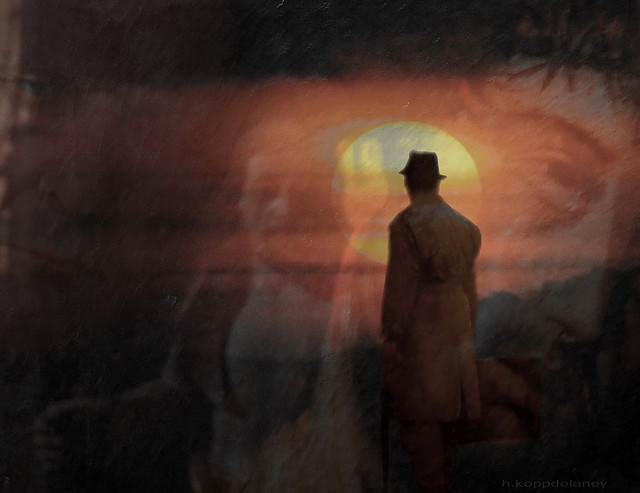
Synchronicity was a term coined by Dr. Carl Jung to describe these types of happenings. During his many years of research and medical practice, he documented multiple cases that could not be explained by mere probabilities of chance. Dr. Jung came to believe that if you pay attention to these events, they could add meaning to your life. They might even help and guide you in a time of personal distress.
All of this was out of my league. Way out. But I was open to at least thinking about the possibility of synchronicity. The problem was how to explain it in clear, simple language and at the same time, incorporate the quantum physics, non-locality, and observer participancy elements that were also part of the story, then weave them so that the seams didn’t show.
Like I said, way out of my league.
EXAMPLES?
Some coincidences could be interesting little curiosities. You go to a bookstore looking for a particular book, but can’t remember the title. You walk down an aisle and a book falls off of the shelf right in your path. It’s the very book you’re looking for—odd, but nothing life-changing. Perplexing though.
But some synchronistic events can be life-savers, like the following two real-life events.
RATHER ORDINARY REASONS
“All 15 members of a church choir in Beatrice, Nebraska, due at practice at 7:20, were late on the evening of March 1, 1950. The minister, his wife and daughter had one reason (his wife was delayed to iron the daughter’s dress), one girl waited to finish a geometry problem, one couldn’t start her car, two lingered to hear the end of an especially exciting radio program, one mother and daughter were late because the mother had to call the daughter twice to wake her from a nap and so on. The reasons seemed rather ordinary.
“But there were 10 separate and quite unconnected reasons for the lateness of the 15 persons. It was rather fortunate that none of the 15 arrived on time at 7:20, for at 7:25, the church building was destroyed in an explosion.”
– From “Lady Luck: The Theory of Probability,” by Warren Weaver
THE ODDS?
What does this mean, if anything? What are the odds of something like this happening?
Is there possibly an undiscovered connection between minds that transcend the known laws of the universe? Are our minds connected to a “collective unconscious” as Dr. Jung believed? And, if so…
WHAT TO MAKE OF THIS?
One of my all-time favorite books, a classic called Man’s Search for Meaning written by Dr. Viktor Frankl, described a synchronistic event that changed his life forever.
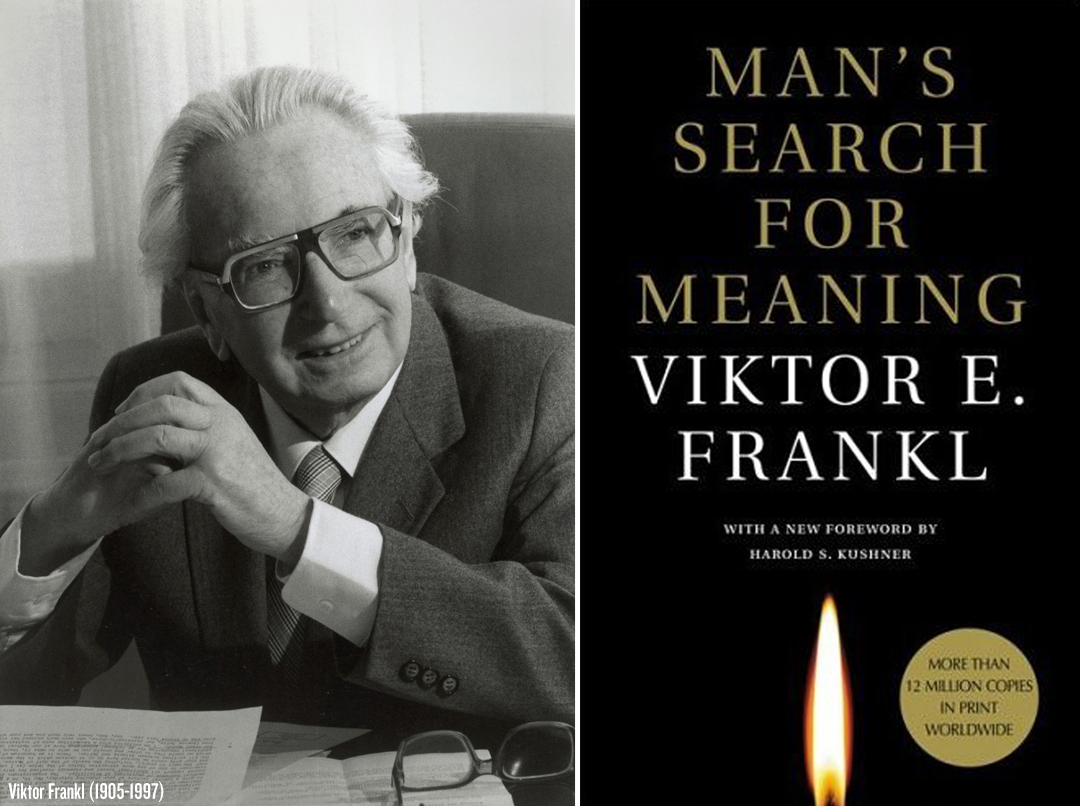
Dr. Frankl had a successful neurology and psychiatry practice in Germany in the late 1930s, but he was Jewish. He knew he had to leave Germany soon or face death. He applied for a visa and after several years, it was approved. But there was a problem.
“I was asked to come to the US consulate to pick up my visa. Then I hesitated: Should I leave my parents behind? I knew what their fate would be: deportation to a concentration camp. Should I say goodbye and leave them to their fate? The visa was exclusively for me.”
– Viktor Frankl, Search for Meaning
THE HINT WISH
Dr. Frankl remembered thinking then that he’d wished for a “hint from heaven” to help him make the decision. Later that day, he picked up the visa and went to visit his parents to discuss it. When he arrived, he found his father in tears.
“The Nazis have burned down the synagogue.”
Dr. Frankl noticed a piece of marble on the table. He asked his father about it. It was a fragment his father had saved from the synagogue. It had some scorched writing on it.
ONE ENGRAVED LETTER
There was one letter etched into the marble. It was the beginning of one of the Ten Commandments.
כבד את האבא שלך ואמא שלך
Translation?
“HONOR THY FATHER AND THY MOTHER.”
Dr. Frankl made his decision. He canceled his visa. It changed his life forever. He was sent to the death camps—yes I said “camps.”
Dr. Frankl survived more than one Nazi death camp, and Man’s Search for Meaning recounts that experience. He wrote the book in nine days. It was published in 1946 and is widely considered to be one of the most influential books of our times.
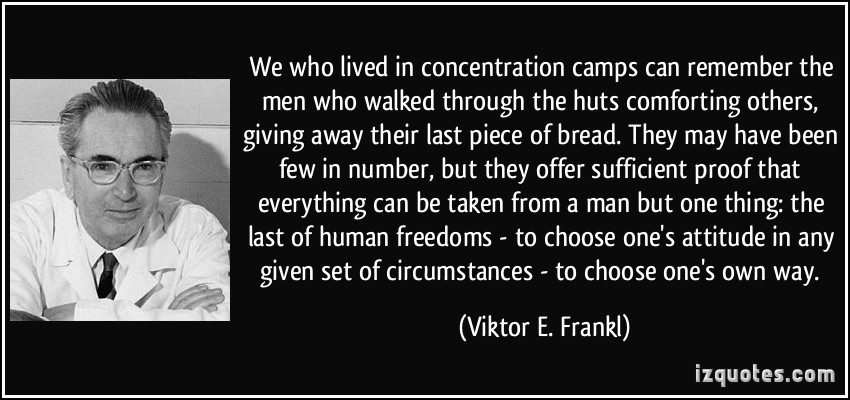
SILENT SERENDIPITY
Strange—undeniably strange and true. But nothing like that has ever happened to me. Not even a book falling off a shelf to land at my feet.
But maybe I hadn’t been looking close enough, because while finalizing the research for the story I was working on I happened across an article that I’d written a couple of years ago. Was stumbling upon this story synchronistic? I don’t know … but I hadn’t thought of this story for many years.
It was also about another terminally ill cancer patient—a woman I knew. I was asked to write a fundraising story about her plight. It had been exceptionally hard to write, but it was one of those rare moments when you feel humbled to be asked to do something that might actually make a difference—if only for a short time.
LIVING WHILE DYING
Trying to complete that story was a challenge for me, too. Remarkably, it was similar to the one I was working on about the doctor. The raw emotions involved, the brutal facts, the stark realities and worse, trying to communicate what it’s like to face the everyday issues of living while you’re dying—in plain, simple language—without getting lost in data or minutiae that really doesn’t matter.
Happening upon this previously written story at exactly that time helped me to remove the block and finish the story. It made me ask the question that, as I think about it, still makes my head want to explode.
Was happening upon my previous article purposeful or simply an accident?
THE PARADOX?

I struggle with the thought of it being purposeful. It conflicts with my view of reality. If it wasn’t purposeful, then it was an accident. But if it was an accident, it was a synchronistic event that only I could draw meaning from.
Could these hints from heaven, or synchronistic events, be the greatest words you will never hear?
I haven’t resolved the puzzling paradox yet, but I did run across words from Dr. Richard Feynman that helped me come to terms with it…
“A paradox is not a conflict within reality. It is a conflict between reality and your feeling of what reality should be like.”
– Richard Feynman, American physicist

To win at business or life, adversity has to be encountered, faced, fought and defeated. There is no other way. No options. You either beat it, or it beats you. Win, or you lose.
Simple. Right?
No.
It’s never black and white. Never win or lose. Something always bleeds over. Always. Sometimes good – sometimes bad. Sometimes funny – sometimes sad. Most times a little of both. But hopefully each experience brings with it life lessons and blessings.
This is one such story – but I didn’t know it at the time. Like many mystical magical moments in life, it was gone before I had time to come to grips with my own inadequacy. It was gone before the numbness of an ordinary, normal, average life was pierced by the spear of an angelic character, steeled by a life done wrong.
Take no umbrage, no offense, at the point-of-view of the narrator. It’s a personal recollection. A recollection colored by fond remembrances of two spirits sideswiping each other on life’s unfathomable path.
Sometimes there’s nothing sadder than humor.
SMART VS. SMART-ARSE
Several years ago I got fired for being too smart. That was my recollection. Everyone else’s recollection was I was fired for being a smart-arse.
So, I had to find a new job. My first interview went well (not). I was promptly turned down for the CEO position at a well-known hosiery company. Now granted, I didn’t have much (any) experience in the creation, production, marketing, sales or distribution supply chain of the hosiery industry. But, being of the gender I am (a manly kilt-wearing man), I was pretty certain I could articulate the benefits and unique selling proposition (USP) of the product in a compelling and profitable way.
REJECTION EJECTION
Upon rejection (there was some confusion upon my departure. The mistaken impression that I was ejected from the premises may have been surmised had one been watching), I forlornly began wandering the streets of Cincinnati, with my head drooped just about level with my navel.
Walking like this has some disadvantages. Clarity of vision is one. I ran into something hard, looked up, and before me was … an apparition, an event, a pre-destined meeting, a saint.
A WOMAN IN A WHEELCHAIR.
But Steve, you say to yourself, that’s not terribly uncommon. A little melodramatic aren’t you?
No.
She had no legs. And …
No arms.
She controlled the operation of her motorized wheelchair by blowing through a tube. I was humbled. Dropped low. Deep. My problems were now nothing but a smashed proton in the unfathomable singularity of a black hole.
She was navigating the sidewalks of Cincinnati by herself.
Alone.
To educate people unfamiliar with Cincinnati on how daunting a task this can be, Cincinnati sidewalks were built before sidewalks had been imagined and possibly even before the invention of the wheel. A rut in the sidewalk is typically referred to as an “improvement.”
I saw her get ready to enter a building and leaped forward to open the door. As I did, she spoke, my apparition, my saint, with an angelic voice.
“Hey, Bozo, what do you think I am some useless quadriplegic?” she said.
I guess even saints have rough days.
TERM OF ENDEARMENT
I considered the reference to me as “Bozo (the clown)” as a term of endearment. Why? Because my face had turned absolute white, my nose vivid red, my hair popped out like a bad 70’s Afro (I used to have a good 70’s Afro … I know the difference).

“I’m sorry, I was just trying to help.”
“You want to help? Get in here and buy something.”
She was the owner of the shop. And, in one of those weird synchronicities not fully explained, but hinted at in Einstein’s Special Theory of Relativity, she sold, you guessed it, women’s apparel. Mostly hosiery.
Her name was Antonia Maria, and that’s all the personal history I ever really learned about her.
MARKET RESEARCH
I was so overwhelmed, humbled, and awed at the obvious obstacles and adversity that Antonia Maria was overcoming daily, if not nanosecond-by-nanosecond, that I bought 37 pairs of every imaginable type of hosiery (under the guise of real-time market research for my next hosiery CEO job application).
Her eyebrows arched a bit (well, maybe more than a bit) when I piled them up on the counter. And, with my usual sophisticated schmoozing aplomb I explained I had an extended family.
“Lots of females,” said I.
For nearly a year, once a week, I stopped by her shop and bought hose. We became Forrest and Bubba Gump-ette close.
“Hey Bozo.”
“Hey Antonia Maria.”
Each visit was an inspiration. A lifting up, not sad, not melancholy, but a moving, life-affirming, sharing of the human spirit and journey. To trek through this world as she did, daily overcoming the obstacles (physical, economic and social) and adversity she faced … was truly amazing.
Occasionally she’d catch me in a mathematical obfuscation.
“How many females in your extended family?”
“28.”
“Was 25 last week.”
“Newborns … very fertile, my family.”
RIGHT THING. RIGHT TIME
In addition, she was quite the enterprising entrepreneur, having an in-depth, innate grasp of contextual marketing concepts. Antonia Maria had the incredible knack of saying the right thing, at the right time, to the right person, to move them deep into the buying cycle.
“I’m guessing you’ll need a few extra pair of hose this week then?”
I nodded.
I AM RUDE AND DUMB
Yes, I admit. Freely. Authentically. Rude and dumb. I honestly throw myself on the altar of “what was I thinking?” I could not, often times, refrain from staring at her when I felt she wasn’t looking. I wondered how she did it.
How she coped. How she smiled. How she woke each day and got out of bed to go to work. And a million other “hows” that crossed my misfiring neurons.
Then, it was over.
She disappeared. Her shop closed. No signs. No explanations. No forwarding address. I inquired, but no one knew anything. I hesitated to do any extensive investigation for fear of what I might learn.
It’s said that the eyes are the windows of the soul. If that’s true, Antonia Maria’s soul was on fire. Her iridescent brown-green eyes absorbed and expressed life. Faith. Spirit. Strength. Hope.
To this very moment, I remember everything about Antonia Maria. Everything so incredibly resilient, hopeful, happy, glad and beautiful she ever said.
HOW DID SHE DO IT?
I don’t know. I’m not smart enough to answer that. Never will be. I couldn’t do it. Too weak.
I do know that Antonia Maria had a vigorous life-affirming charismatic spirit that shone through all her adversities. She had a heart wider than the Grand Canyon that would take on any issue with uncharacteristic straight-forwardness. And …
NEVER
Not once, let me repeat this, not once, did she ever complain about … or for that matter even explain her physical condition.
If I had to guess how she did it?
Spirit. Heart. Guts. Faith … and life-enabling technologies.
The technological marvels wrought by industry research, development, application, and availability that enabled Antonia Maria to face, fight, defeat and triumph over her physical obstacles were, unless you actually saw it, almost ineffable.
Time passed.
UNFORESEEN DOWNSIDE
Eventually, our relationship had a downside that ultimately gave me the opportunity and skills to overcome an adverse moment in life. Last month, my wife, grandmother, daughter and aunt were rummaging through my basement workshop for “yard sale” items.
HOW MANY PAIRS OF HOSE???
They found 2,093 pairs of hose.
When confronted by this gathering storm of frumpettes, I quickly used my marketing abilities to “reposition” this disturbing find and utilized a UES (Unique Explanation Statement) touting the find as in-depth “market-research.” This was supposed to overcome the obstacle of false impression embedded in their minds.
It failed. Utterly. Miserably.
WAR AND PEACE
Only one supporter swallowed the UES – my dog, Tolstoy. (Named so not because he looks like Tolstoy, but because he always backs me during war or peace … provided he receives his weekly stipend of Scooby snacks.)
But being the absolute ruler and king of the castle, I decided to imperiously tell the gathering storm of frumptettes to mind their own business.
That didn’t work either.
So, I confronted this impending doom of an adverse moment and took decisive action. I grabbed the donkey by the horns and used a tried-and-true tactic. One that successful Venture Capitalists use almost daily.
And it worked. The tactic?
THE EXIT STRATEGY
###
The Path feature image courtesy of H. Kopp Delaney. Please visit his site. One of the best artistic talents of our times.

I’ve had the good fortune to interview and work with many great storytellers over the last few years. What follows is a series of articles with hard-earned and learned lessons from some exceptional writers, storytellers, and teachers. One of those people was Robert McKee, the best-selling author of “STORY” and legendary guru of Hollywood storytelling, several years ago. The premise of the interview was simple – can the principles of his classic book “STORY” be used in the complex sales process?
SIMPLE CAN BE TIMELESS
Though the premise was simple, the lessons learned were timeless – and can be used in your life of business or the business of life.
WHO IS ROBERT MCKEE?
Robert McKee is the most widely known and respected screenwriting lecturer in the world today. His STORY Seminar has been taught to over 50,000 screenwriters, filmmakers, TV writers, novelists, industry executives, actors, producers, directors, and playwrights.
Teaching is easy. Results are hard. Robert McKee’s STORY and the stories delivered by his students have garnered;
- 32 Academy Awards – 106+ Nominations
- 168 Emmy Awards – 500+ Nominations
- 21 WGA Awards – 77+ Nominations
- 17 DGA Awards – 48+ Nominations
His former students’ accomplishments are unparalleled. Stories written, directed, or produced by students of Robert McKee include:
“Iron Man,” “Angels & Demons,” “WALL•E,” “Lord of the Rings I, II, III,” “A Beautiful Mind,” “Desperate Housewives”, “CSI, Law & Order,” “Cinderella Man”, “Gates of Fire” (novel), “The Daily Show,” Grey’s Anatomy,” “The Simpsons Movie,” “The DaVinci Code,” “Cars”,” Shrek.” “X-Men 3,” “Million Dollar Baby,” “Ratatouille”,”Finding Nemo,” “Paul Blart: Mall Cop,” “The Last Mimzy,” “Bobby,” “Quantum of Solace,” “The Color Purple,” “Crimson Tide,” “The Deer Hunter,” “The Elephant Man,” “ER,” “Forrest Gump,” “Gandhi,” “M*A*S*H,” “On Golden Pond,” “Saving Private Ryan,” “Robin Hood: Prince of Thieves,” “Sleepless in Seattle,” “The X-Files,” “A Time to Kill,” “Toy Story I and II,” and more.
Robert McKee knows STORY. He wrote the book.
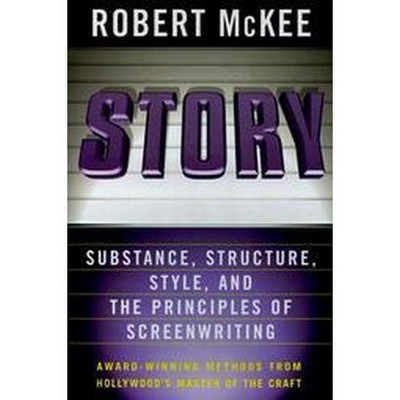
INTERVIEW
Steve (S): How can the principles of Story work in the Complex-Sales presentation? How can it be used to resonate and touch disparate groups with different agendas, goals, and prejudices, while at the same time, connecting the intellect – making good economic business sense?
R: First, why is it so complex?
S: Good question … the complexity of the products and services and the buying committees have forced salespeople to communicate with a lot of different types and groups of people – users, business types, programmers, etc. To accomplish this, it usually turns into a 58-slide PowerPoint presentation laden with meaningless corporate acronyms to address every aspect of the individual’s wants/needs on the buyer’s committee … too much info.
And, the fact of the matter is, there are a lot of products and services that can solve their problems. There’s not a lot of difference. The key should be the sales presentation … effectively communicating simply the economic business value and connecting on an emotional level with the people.
R: You know, I’ve been in situations where writers are pitching their stories, right? They’re trying to sell their screenplay. Most executives are so busy that they would rather have the writer come in and pitch the story in 10 minutes before they decide whether they want to spend two or three hours reading it. So the pitch has to go well. I’ve seen writers come in and they’re charming, they’re funny, they do this brilliant song and dance about their story that they have obviously rehearsed and polished and then tell their story virtually tap dancing on your desk. And I have also had writers come in that were not very good. Not good! They were scared to death. They were very shy. They weren’t comfortable around people. They couch and choke their story out and … you know it’s brilliant.
S: But, how, or why, do you know the story is brilliant?
R: Because you listen to the story and no matter how badly the guy performs it, you go “that’s a great story.” You’re fascinated by the sudden story surprises and revelations – although the delivery may not be there.
LESSON LEARNED ONE: SMOOTH AND SLICK DON’T ALWAYS STICK
There’s hope for us less-than-smooth-and-slick storytellers and presenters. Great story rules. But you still need to work on your delivery.
S: What about the charming, funny guy?
R: Mr. Charm? You listen to his story and you know he’d better be charming because his story is a piece of crap if you actually listen to what’s being said. In the great play and the film Death of a Salesman, Willy Loman talked about always having a shine on your shoes and a smile on your face … but he’s a terrible salesman and his family is starving.
LESSON LEARNED TWO:
If you’re out to describe the truth – leave elegance to the tailor. – Albert Einstein
R: But I do know, presuming that the people you’re trying to persuade are intelligent and are actually listening and not being influenced by the charm of the speaker, that there’s a powerful, compelling way to present effectively. Story.
S: Story? Can you explain what you mean when you say that? How would you incorporate Story principles into the Complex-Sales presentation?
R: There are two choices or methods of presentation. Rhetoric or Story. It’s all about persuasion, right? You’re trying to persuade someone to buy something. Or in the Complex-Sales setting, you’re trying to persuade some people at various levels involved in the hierarchy of some organization. Rhetoric is the PowerPoint method where you present evidence in a particular order … or what is known as an inductive argument, right?
S: The difference?
R: Rhetoric is statistics, facts, quotes from authorities, etc. Rhetoric recites this point, this fact, this industry-analyst quote, and then another point, ad infinitum, so, therefore, mine is the best, the greatest, the one, the only, product and service that can do what you need.
S: Yes … so what’s wrong with that?
R: They know you’re lying! You lie in a rhetorical PowerPoint presentation by presenting the information in the most favorable light possible. The buyer knows you’re lying because the buyer is a businessperson who knows that nothing is that rosy. You quote your industry analysts – they’ll refute your industry analysts with theirs.
LESSON LEARNED THREE:
“I didn’t fib! I made a fable, like Aesop and those other guys.” – Dennis the Menace (noted philosopher I quote often)
Don’t lie … fabricate a fabulous fable.
R: Why expose your weaknesses? Why not conceal it? Because if you only give the positive side, they instinctively know you’re lying. Because why? Again, nothing is that good. The deep difference between presenting something rhetorically and creating it in a story… is that in a story, it is a dynamic of positive and negative charges.
S: Example?
R: You start up a business and immediately you’ve got problems. You overcome those problems and take a step forward, but new problems arise. You find ingenious ways to solve those problems only to discover that you have a competitor who’s got another product that does it better. You improve your product to be better than your competitor. It goes on. So when you tell a story, you can’t just hit positive, positive, positive.
In Story, you cannot hide the negative. It’s overcoming the negative that makes you powerful. It makes the positive even more positive in the eyes of the person whose hearing the story. Therefore, when you tell a story, admit problems and then dramatize the solution of those problems. Then cause new problems to arise. Dramatize the solution of those problems until you finally get to that positive climax. Because you’re admitting your negatives in front of them, it takes a lot of guts.
LESSON LEARNED FOUR:
Admit the negative. Overcome. Give yourself the power.
R: They sit there saying: “That’s right. That’s true. That’s what it’s like to be in a business environment. It’s not all positive. But this person is showing me how his product or his service will overcome those problems and how I will benefit.” As a result, they feel that they’re being told the truth.
S: But couldn’t you be lying anyway?
R: Yes, you can lie in a story just as well. But when you tell stories, if you lie, the lies become evident quickly because of the interweaving of story and fact. When you tell it in PowerPoint, they know you’re lying. They just don’t know where. There’s a more important lesson here. You realize, well, that’s a lie! That’s crap. I wouldn’t buy that.
LESSONS LEARNED FIVE:
“The truth is rarely pure, and never simple.” – Oscar Wilde
R: Preparing to tell your business case in a story forces you to confront the lie and search for the truth. You will catch yourself as you prepare for the presentation sloughing over certain problematic things. If you’ve got guts, you won’t slough over them. You will admit them.
S: Why? (Am I the master of the one-word question or what?)
R: Because then you will show how even these challenging problems are overcome. When you tell your story honestly, and you don’t hide the negative, you tell it well. People sit there with their mouths open going, “my God, what guts.” Put them in the position to see how the negative is overcome. You’ll gain their trust. And, you will have also impressed the heck out of them because you’re an honest human being who knows the reality. A person who deals in reality, but has honestly dramatized the way in which these problems, that we all, as business people, know exist.
LESSON LEARNED SIX:
Impress them with your honesty. Expose the negatives. Gain their trust.
S: In STORY, you say Paddy Chayefsky told you once that when he’d discovered his story’s meaning, he’d scratch it out on a scrap of paper and tape it to his typewriter so that nothing going through his typewriter would in one way or another express his central theme. A clear statement of Value and Cause. That seems like a logical first step in any story.
LESSON LEARNED SEVEN:
Discover your story’s meaning. Make it your clear statement of Value and Cause.
R: Yes. From there you’d take that same rhetorical presentation and dramatize it. Within the story there is rhetoric, there is information. The facts get woven into the story. Weave the information dramatically within a story. Leave them hanging. If you tell them a story that’s predictable, they’ll get ahead of you and lose interest. Tell a story that pits expectations vs. realities, and the struggles to overcome them. I believe great salespeople are by instinct, storytellers.
LESSON LEARNED EIGHT:
Pit expectations vs. realities. Tell the struggle to overcome. Leave them hanging.
S: And the foundation of a good storytelling Complex-Sales presentation is?
R: Research. The key to winning the war is research, taking time and effort to acquire knowledge. Understanding their problems …
S: Is that what you mean when you describe it as “storytelling from the inside out?”
R: Yes. You want them empathizing; you want them saying, “my God he’s telling my story. That’s me.” It’s got to be very personal for them.
LESSON LEARNED NINE:
Understand THEIR problems. Make it personal to them.
S: Could you talk a little about “The Principle of Creative Limitation?”
R: It’s exactly the subject we’re talking about. The PowerPoint presentation is easy, that’s why people do it. Creative limitation means instead of doing something the easy way; you do it the hard way. You take a method that is much more difficult to accomplish. As a result of your struggle as a salesman to accomplish the presentation in the form of a story, you are forcing yourself to be creative. The more difficult you make it for yourself, the more brilliant the solutions you will have to come up with, or you fail. And when you come up with brilliant creative solutions to the presentation, the results for the people, for the audience, are stunning.
LESSON LEARNED TEN:
Make it hard. Force yourself to be creative. It will stun your audience.
R: The principle of creative limitation forces you to do it the hard way. Story is more difficult than PowerPoint there is no question. You have to have a real talent for this, and you have to do it well, or you will look like a fool. That is why people avoid it because they don’t have the talent, they don’t do the research. They don’t know, they don’t know how to present it in a living way it’s difficult.
Why is whistling not a Beethoven symphony? Because whistling is easy. A Beethoven symphony is hard. But when you take on the challenge of writing a symphony, the creative solutions are amazing, overwhelming. Whistling is something you can do on the street.
The more difficult the technique, the more brilliant the solution. Another analogy … golf is more difficult than ping-pong. It’s not that ping-pong isn’t good, it’s a lot of fun and at the highest levels, it’s wonderful. But ping-pongers are not Tiger Woods, why? Because the golf swing is infinitely more difficult than hitting a ping-pong ball. Touch football is not tackle.
When you make things easy, the results are boring. When you make things difficult the creative solutions, the concentration, the practice, and the work that has to go into it, forces you to be creative. The results are all the more stunning. PowerPoints, of course, are the natural choice because people do not want to work and they don’t want to fail. And so they take what is easy and they think it will be successful. And then, they don’t get the sales.
LESSON LEARNED ELEVEN:
Challenge yourself. Do you want to be a whistler … or a Beethoven?
R: And so, when they fail, they blame the product, they blame the buyer for whatever reasons they rationalize they’re crazy.
S: In your book, you talk about the “GAP” … what is it, and could this be an effective tool in a Complex-Sales presentation?
R: The world does not react the way you thought it would react. The GAP is between expectation and reality. What do you do? You’ve got to gather yourself and find another solution. When the gap opens up in life, it’s because the negative side of life that you could not anticipate suddenly erupted in the face of your action. Every day you walk into an office expecting cooperation and then one day you get antagonism. The deep difference between Story and PowerPoint is that Story admits to the negative. Admits to the fact that life does not react the way you expect and that is a fundamental difference. The gap is the essence of overcoming the chasm between expectations and reality. PowerPoints, pretend that gaps don’t exist. PowerPoints, pretend that the world will react exactly the way you predict.
But what guides you, of course, is that you’re ultimately trying to leave with the buyer one, clear, simple idea you want them to all understand. Not just understand intellectually, but also understand emotionally by the time you’re done.
LESSON LEARNED TWELVE:
A good story connects one simple idea – intellectually and emotionally. It exposes, then overcomes the chasm between expectation and reality.
S: In your book, you said from the ’20s to the ’50s storytelling was common knowledge. Now it’s a lost art. Is Story really a lost art or is it just not being taught anymore?
R: We went through a terrible cycle of very, very bad education of the writer. Education of the writer/storyteller was turned inside out from the ’60s on, but now finally, the light is dawning on people and they see that there’s a difference. The fundamental difference is between criticism and creativity. What’s been taught to writers for the last 40 years was not creativity but criticism. The methods of speech and literature and writing at universities may have been extremely valuable to people who want to be critics, but useless to the writer/storyteller, and in fact, detrimental to the writer.
END OF INTERVIEW
For more information on STORY and the art of storytelling, visit Robert McKee website.
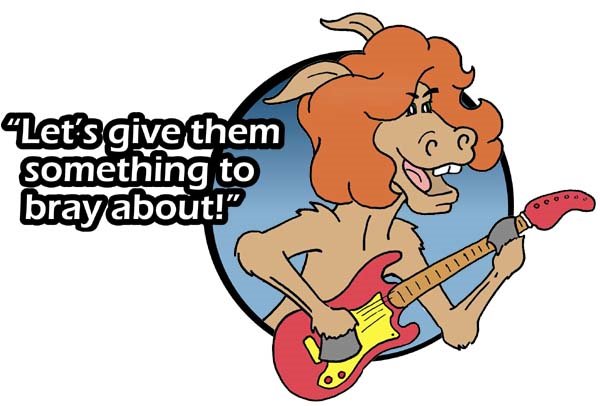
I AM SAM I AM
Sam Horn is the owner of ‘The Intrigue Agency” and a world-renowned Author, Keynote Speaker, communications strategist, and executive coach who has trained the world’s top entrepreneurs (e.g. EO, YPO, TLC) and executives (e.g. Intel, Cisco, Boeing) how to communicate more clearly, compellingly and convincingly. She has presented in person to over 500,000 people in various venues.
SAM I AM HAD BUT ONE FAILURE
Sam’s pioneering “POP! Stand Out in Any Crowd” book, endorsed by Seth Godin, Ken Blanchard, Mark Sanborn and marketing guru Jeffrey Gitomer (who calls it ”a rocket ship to your success”) introduces an a step-by-step system for creating first-of-their-kind titles, taglines, pitches, brand messages, positioning and marketing copy that get products and services noticed, remembered and bought.
AND SHE TURNED THAT INTO AN AWARD!
Sam even tried to train me once. And it failed miserably. Probably the only failure Sam has had in her life. But she creatively harvested gold out of it by creating the incredible SLAP award. More on that later in this article.
COMMERCIAL TIME OUT!
A warm and hearty thank you to Ms. Sam Horn for her review of the book “The Greatest Words Never Heard.”


“What a raw, powerful book. Thank you, Steve, for having the courage to show us that we serve when we dare to share challenging, heart-wrenching experiences. Anyone going through a dark night of the soul will find this book inspiring.”
BACK TO THE STORY – THAT WAS QUICK WASN’T IT?
I have interviewed Ms. Sam on the radio and for a business publication. It was a hoot. I quite possibly am the only person that has made this terrific thinker, speaker and author speechless. It was this article (below) that stumpfied her with my smellfungus mooncalfery. But, Sam’s wisdom shines through. Read this article and learn”How to Stand Out in Any Crowd.”
HOW NOT TO STAND OUT IN ANY CROWD
You, your product, your service, your company, is good … maybe great. It’s different, unique, totally rad, awesomeroo and bloggerific. It even (occasionally) delivers real business value; makes an authentic difference in business or life.
But … no one has heard of you. You’re one of a kind. You know it. You can prove it. But still, you’re one of a kind that no one knows. No one has ever heard of you. You haven’t even heard of you.
You Haven’t Even Heard of You!
Not for lack of effort though. You’ve tried to communicate your brilliance, your stupefying, heart-stopping differentiators, your value-laden proposition power pack, but your message gets sucked down the black hole of no return. The dreaded ….
Inbox Out of Control
By “inbox” I’m referring to your mental inbox as well as work inbox.

You can’t seem to break through … to stand out in this infoglut world 2.0 where the speed of light has finally been surpassed (though Einstein said it wasn’t possible, he was never bombarded with electronic corporate gobbledygook) by the cumulative effect of spam scud missiles, instant messages, BlackBerrys, mobile apps, blogging, etc.
Even though you know why you’re different − why you’re special − you can’t capture someone’s attention unless you communicate it so brilliantly it shines and stands out. Everyone gets it instantly. But standing out is getting harder … and easier every day.
Harder because the sheer volume of marketing messages an average person sees a day is almost beyond measure. It used to be that the average American was subjected to 3,000 marketing messages a day − 3,000 marketing messages a day!
Wow. Those were the good old days.

These days, you see that many before noon. How is it getting easier then?

Harharharhar. Just kidding. I lied. Just threw that in to obfuscate. It’s not getting easier. Sorry. And it won’t get easier. But, with the proper approach, you can reach your goals and …
Capture Customers?
Are there strategies and tactics that can help you break through and stand out? To capture customers’ and prospects’ attention, hearts, minds and …. (ahem) money?
“Money, which represents the prose of life, and which is hardly spoken of in parlors without an apology, is, in its effects and laws, as beautiful as roses.”
– Ralph Waldo Emerson
We’ll find out from professional speaker and author of “POP! Stand Out in Any Crowd,” Sam Horn. Sam’s books have been endorsed by such luminaries as Stephen R. Covey, Jack Canfield, and Anthony Robbins. But none communicates the essence of the book with such eloquent intellectual simplicity as the testimonial below.
“As a person who once used a sparking Barbie doll to set fire to a pair of underpants on national television, I can vouch for the importance of standing out from a crowd. As a friend of Sam Horn’s, I can also vouch for the excellent advice she offers in POP!” – Pulitzer-Prize winning humorist Dave Barry
BUT FIRST( AND IT’S RELATED) … POP!
Donkey quit. My Donkey quit. Just like that – POP – several years of collaborating and co-writing went up in smoke. No more “Shoot the Donkey” stories. Success had gone to his

donkey head. (I won’t comment on the lipstick … but I have heard rumors.) After a series of successful articles that included: “Shooting the Donkey in the Complex Sales Process … Hollywood Style,” “Veni, Vidi, Tiré a dos burros,” “I Came. I Saw. I Shot Two Donkeys,” and “My Darling, Is That Manure Stick You Have on?, Donkey decided he could make it on his own.
A Donkey in His Own Write
He wanted to be his own donkey and write his own book. That’s right, his own book. He didn’t tell me about this until he was almost done.
 I took it in stride.
I took it in stride.

But then decided I wanted (needed) to try to save our relationship. We went to counseling. But every time I brought up “Shoot the Donkey” …
 It was just too painful. Counseling didn’t work.
It was just too painful. Counseling didn’t work.
When I realized he was determined to quit no matter what and move on with his donkey life, I decided to do the right thing. Try to help him (later I needed some help myself). Donkey’s book was almost done. It was a compilation of lessons he’d learned from humans. I offered him my help in marketing the book, but Donkey said he didn’t need it. I’d done enough already.
Ready to Break Through, Stand Out, and Go to Market!
My Donkey already had the plan and his book title,
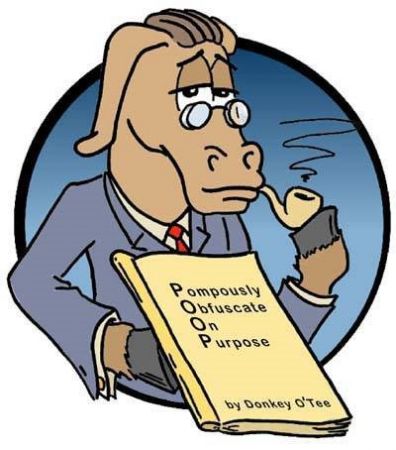
When he showed me the draft, I didn’t know what to say without hurting his feelings. Except that as much as he’s been around corporate business-speak, he ought to know that if the book was successful, someone would turn the title into an acronym, and well … that might turn out a bit crappy. Donkey discounted that and quickly pointed out that his full name was prominently featured on the cover (unlike his collaborative efforts with me where we were known only by his first name … Donkey). And why was this important? Well, according to Donkey O’Tee, all great, memorable names and slogans incorporated the person’s or company’s name.
Example:
“Oh, I wish I were an Oscar Mayer wiener, that is what I truly wish to be. ‘Cause if I were an Oscar Mayer wiener, everyone would be in love with me.”
He was going to use a similar strategy – though he quite hadn’t figured it out yet − to market his book.
Example:
Oh, I wish I were a Donkey O’Tee wiener, that is what I truly wish to be … be … be.
I asked him if he knew what happened to weiners (hot dogs)?

Donkey was horrified. He quickly moved on to his next example, from the insurance industry. He asked me if I knew …
“You’re in Good Hands with …”
”Allstate, of course,” I answered. But, I didn’t think that would work for him either.

Didn’t ring, resonate or POP! Not to mention the hoofs vs. hands issue.
“But what,” I asked,” is your book really about?”
“You don’t know? Can’t you tell by the title? It’s the “Idiot’s Guide to Business Survival.” It’s my elevator spiel. I mean you humans excel at making the simple complex, the complex unknowable, and the unknowable entertainingly hilarious! And, you do it was such pompous profligate proliferating panache that to succeed in business today, even to keep your job, you need to know how to excel at …
“Pompously Obfuscating on Purpose?”
Yes! You see … a bestseller in the making!” said Donkey O’Tee. “Go to any business website, read any business report, letter, brochure, advertisement or marketing message … it’s undeniable. To survive in the human’s business world today, you have to be able to …
“Pompously Obfuscate on Purpose.” I echoed with dismal dismay.
“Less is not more! Less is out of a job. More is less. More is needed all of the time. More of more and less of less, more or less!” brayed Donkey O’Tee hilariously. “And … I‘m going to get all kinds of media coverage, you know why?
“Why?”
“You heard that song by the famous female songwriter Bonnie Braitt?”
“You mean Bonnie Raitt?
“No, You having trouble hearing? Bonnie Braitt.”
“What song?”
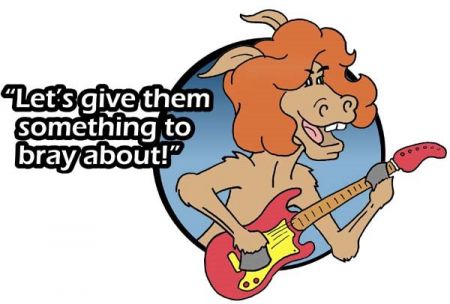
“I’m going to give them something to bray about!”
For once, I was speechless. Though Donkey had made some excellent points, I still felt duty-bound, nonetheless, to seek out some expert advice on his behalf. For Donkey O’Tee to succeed, he had to stand out (and not just in a field) to capture national and international media attention.
ENTER: I Am Sam Horn I Am
Sam is a professional speaker and author of “POP! Stand Out in Any Crowd.” Sam is also the author of several well-reviewed books from major publishers including “Tongue Fu!®,” “ConZentrate,” “What’s Holding You Back?,” and “Take the Bully by the Horns.” These have been sold around the world (China, Japan, Argentina, France, and Germany); favorably reviewed in dozens of publications including Publishers Weekly, Chicago Tribune, Washington Post, Investors Business Daily, Foreign Service Journal, and Readers Digest, and endorsed by many best-selling authors including Stephen R. Covey, Anthony Robbins, Jeffrey Fox, Susan Jeffers, Dave Pelzer, Susan Forward, Rabbi Harold Kushner, Richard Carlson, and John Gray.
Steve: Welcome. I have this friend. He’s writing a book and needs to learn, well …
Sam: To … learn how to break out instead of blend in?
Steve: You’ve got it. What is POP!, and why is it important?
Sam: POP! is a system of 25 techniques I’ve developed that can help ANYONE create attention-grabbing titles, taglines, and tell ‘n sell descriptions for their company, cause, campaign, and creation. It’ll let them break out instead of blend in.
POP! is crucial to success because people today are BB.
Steve: BB?
Sam: They’re BUSY. They have hundreds of things competing for their attention. They’re BORED. They’ve heard and seen it all – or at least, they think they have.
“My own business always bores me to death; I prefer other people’s.” – Oscar Wilde
What that means is, we have 30 seconds to get their favorable attention. If what we have to say and sell is not Purposeful, Original, or Pithy, they’re on to the next thing.
POP!
Purposeful. Original. Pithy. In 30 seconds or less.
Steve: In 30 seconds or less?
Sam: Make a long elevator speech short by Cliff Noting it into one sentence. The more you try to explain what you do or what you have to offer, the more confused people will become.
“My grandfather invented Cliff Notes. It was, well, … to make a long story short.”
– Steven Wright
Instead of going on at length, compare your job or offering to something with which people are familiar and fond. For example, I was in Denver, CO with my sons for a speaking engagement. We had the night free, so I asked our hotel concierge to suggest a fun place we could go.
He said, “You’ve got to go to D & B’s.” We were from Maui at the time and had no idea what he was referring to. We asked, “What’s D & B’s?” He said, “It’s a Chuck E. Cheese for adults.” Voila. We knew exactly what it was and wanted to go there because of his perfect “Cliff Notes” description.
Steve: I get it. (See how purposeful, original, and pithy my responses are?)
“Operator! Give me the number for 911!” – Homer Simpson
Sam: In the book, this is called “The Valley Girl Technique.” It provides specific ways to compare what you do to a popular movie, song, book, or person to create a tell’ n sell elevator intro that gets your project’s foot in people’s mental door.
Steve: How do you come up with a memorable name or slogan? (I didn’t tell her about “Pompously Obfuscate on Purpose” yet because, though memorable it may be, it’s in an infamy kind-a-way.)
Sam: One of the best ways to make your name or slogan memorable is to use alliteration. Alliteration is when words start with the same sound. It makes your language lyrical, makes you instantly eloquent, and gives peoples’ minds a hook on which to hang a memory.
Say these words out loud.
Bed, Shower, and Toilet
Boom radio
Dirt Satan
Good Purchase
Dunkin Croissants
Rolls Jaguar
Steve: Now I’m hungry, sleepy, jiggy, and have to go …
Sam: They don’t POP! do they? They sound commonplace, and they’d be difficult to remember.
Now say these words out loud.
Bed, Bath, and Beyond
Boom Box
Dirt Devil
Best Buy
Dunkin Donuts
Rolls Royce
Hmm … they fit together, don’t they? Alliteration produces “ear music,” which has a nice ring and resonance, which means your brand name will linger longer in peoples’ minds.
Alliterate. Produce “ear music” with a nice ring and resonance and … your brand name will linger longer in peoples’ minds.
Steve: To stand out, you almost have to be one of a kind, or at least be perceived that way. What’s one of the best ways individuals and organizations can become one of a kind instead of one of many?
Sam: The best way to become one of a kind is to coin a word for your business, brand, or book that belongs to you and you alone. One way to do that is to use one of the 25 POP! techniques called Alphabetizing. Write down ten words you frequently use to pitch your project, product, or program. Those are your “Core Words.” Now, run each of those words through the alphabet, changing the sound of the first syllable to match the corresponding letter. I used this technique to create the trademarked term of Tongue Fu! – the verbal form of Kung Fu!
Tongue-Fu: Martial Arts for the Mind and Mouth
Tongue Fu! is martial arts for the mind and mouth. If you run Tongue Fu! through the alphabet, you come up with even more variations.
Fun Fu! is how to handle hassles with humor instead of harsh words.
Run Fu! is for when Tongue Fu! doesn’t work.
Tongue Glue is knowing when to keep your mouth shut.
Tongue Sue! is for lawyers.
Young Fu! is for kids.
These proprietary phrases could become articles, chapters in a book, or presentations for targeted audiences.
See how this works? Instead of competing with everyone else, your one-of-a-kind term turns you into the go-to resource because YOU are the sole provider of that particular item.
Steve: What’s one POP! technique anyone can use to help their ideas and offerings break out instead of blend in?
Create a Half and Half Word
Sam: Use what I call a Half and Half Word to go to the head of the class and become THE topic expert on your product or profession.
That’s what Dr. Francine Kaufman did by naming a cultural phenomenon that was taking place in the medical world. She noticed that more and more children were coming into her office diagnosed with diabetes. The link between diabetes and obesity had been known for years, however, no one had linked them in language until she did by coining the term Diabesity. By creating a one-word name for this condition, she got an impressive book deal and quickly became THE topic expert that media called first for interviews.
You can create your own Half and Half Word by getting a fresh piece of paper and drawing a vertical line down the center, dividing the paper into two columns. Now, start describing the different aspects of your cause, company, creation, or campaign − putting half the words on the left and half the words on the right.
For example, if you were opening a fusion restaurant that combined a mix of ethnic foods, you could write common words from one culture on the left and popular phrases from the other culture on the right. Now, take the first half of a word on the left and match it with the last half of the words on the right. Then take the first half of the next word on the left and match it with the last half of the words on the right, and so on. Keep playing with different combinations until you come up with one that POP!s – ala Ciao Mein, the perfect name for an Italian-Chinese bistro.
Steve: Got it. Piece of cake.
“I know that you believe you understand what you think I said, but I’m not sure you realize that what you heard is not what I meant.” – Robert McCloskey
Steve: What are a couple of laugh-out-loud examples of products that POP!d off the shelf because of their catchy name?
Sam: Here are a couple of my favorite examples of products that POP!d out of the pack because of their catchy names.
Diddle Daddle Piddle Paddle With a Saddle.
A father liked to get down on all fours and give his toddler a “horsy-back ride” around the living room, but his son kept falling off. So, he invented a human saddle he could cinch around his waist that had a safety belt so his son could ride to his heart’s content.
What to call this? Run “saddle” through the Alphabet and what do you come up with? That’s right. DADDLE.
Smitten by Smittens
A couple liked to go for a walk after dinner, but they lived in the Northeast and would freeze their fingers when it snowed. They created a co-joined mitten they could both put their hands in so they could keep their hands warm on their wintry walks. Their clever name? SMITTENS.
You may be thinking, “So what? Do catchy names drive sales?”
You bet it does.
Those clever products were featured in humor columnist Dave Barry’s annual December columns which feature interesting products that have been brought to his attention by his many fans. His column is syndicated in hundreds of newspapers around the country, which means MILLIONS of people now know about Daddle and Smittens.
Steve: Last question. (I pulled a draft of Donkey O’Tee’s book out to show her.) I’m going to run the title of my friend’s book by you. Could you give me your immediate response? If it POPS! or not?
“Anyone who afflicts the human race with ideas must be prepared to see them misunderstood.” – H. L. Mencken
Sam: Sure.
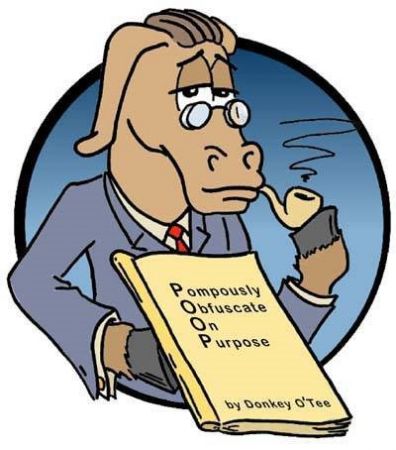
Steve: “Pompously Obfuscate on Purpose.”
“This is not a novel to be tossed aside lightly. It should be thrown with great force.”
– Dorothy Parker
Silence. Pretty deep silence. Complete silence one might say.
“From the moment I picked up your book until I laid it down, I was convulsed with laughter. Some day I intend reading it.” – Groucho Marx
Steve: It has purpose. It’s original. It’s quite pithy.
Sam: Ahem. It’s not quite the POP I’m talking about. More like how NOT to stand out in any crowd.
Steve’s face droops, deleteriously depressed for donkey.
Sam: However. It is something I’m writing about in my next book.
Steve’s face perks up. Visionaries – Donkey and he.
Sam: SLAP!
Steve: SLAP?

###
About Sam Horn
Sam is a respected author of well-reviewed books from major publishers including “Tongue Fu!®,” “ConZentrate,” “What’s Holding You Back?,” and “Take the Bully by the Horns,” all from St. Martins Press. These have been sold around the world (China, Japan, Argentina, France, and Germany); favorably reviewed in dozens of publications including Publishers Weekly, Library Journal, Chicago Tribune, Washington Post, Investors Business Daily, Foreign Service Journal, Dallas Morning News, and Readers Digest, and endorsed by many bestselling authors including Stephen R. Covey, Anthony Robbins, Jeffrey Fox, Susan Jeffers, Dave Pelzer, Susan Forward, Rabbi Harold Kushner, Richard Carlson, and John Gray.
Sam is a frequent media guest who has been interviewed on every major network (NBC, ABC, CBS, and FOX) and on dozens of radio shows including National Public Radio and Dr. Laura. Her work has even been featured on Jay Leno’s “Tonight Show” and “To Tell The Truth,” where she and her Tongue Fu!® team stumped the panel.
Contact:
Sam Horn, Author/Speaker/Consultant
Office E-mail [email protected]
E-mail Sam Horn at [email protected]
About Steve:
Do you need to know any more after that? really? Thankfully Sam Horn pulled it out for me. Steve eventually quit writing with the Donkey – they only speak at a local bar called “The Whiner Diner.” Though losing Donkey O’Tee as a writing partner cost him financially Steve has regained most of that income by modelings Kilts in his spare-time (he does not claim it to be a high-paying job).
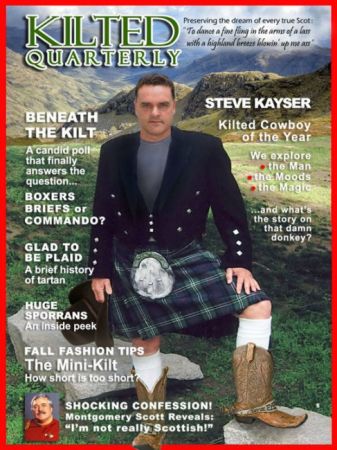
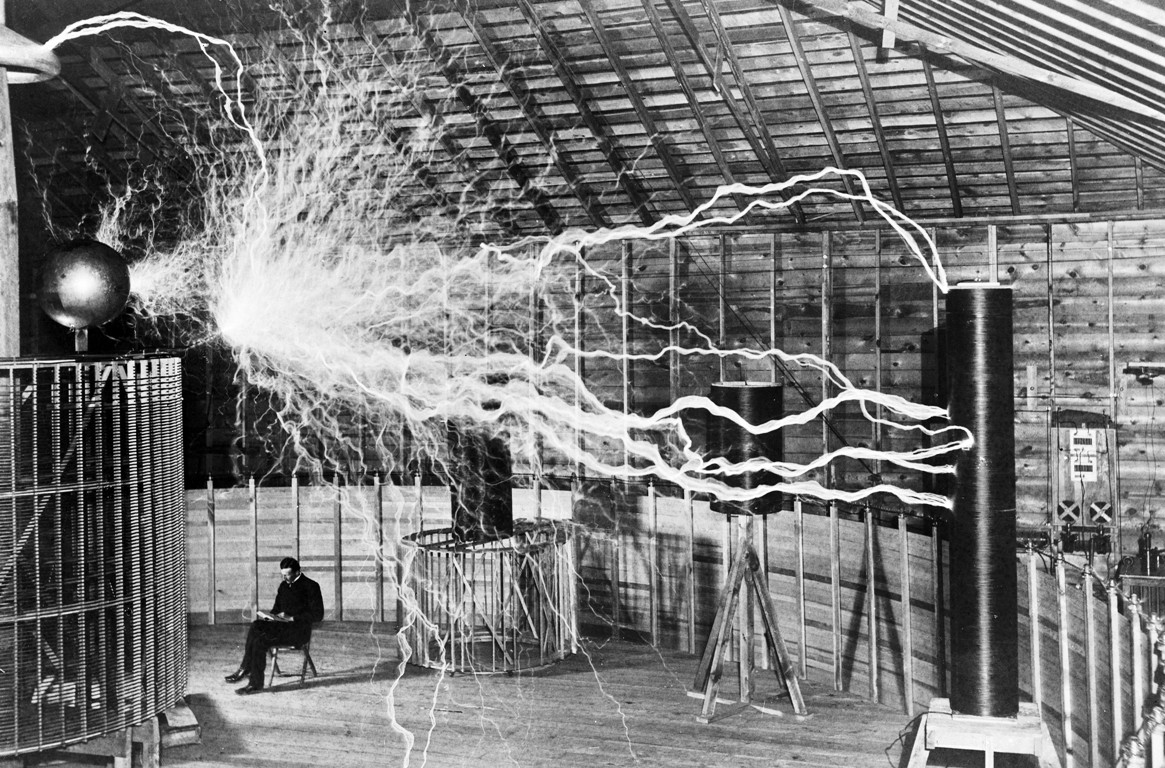
The Timeless Legacy of an Untimely Man
How often has one person affected humanity to such a degree that were the fruits of his labor withdrawn immediately from our day-to-day existence, the world as we know it … would essentially stop? (more…)

“Acceptance Bridge: Crossing the Great Divide,” is now available on Amazon and Kindle. It’s the latest book by Steven Kayser author of “The Greatest Words You’ve Never Heard: True Tales of Triumph“; and Margins and Missions… Not Moonshots: Pathways to Better U.S. Higher Education.”
“Acceptance Bridge: Crossing the Great Divide,” is a story about overcoming insurmountable odds, emotional twists, humorous turns, and a spiritually uplifting climax. And… it’s a lesson in the life-changing POWER of never giving up and never looking back.
“This story has everything it possibly needs to become a smash success. It will make every possible reader happy.” –Frederick Marx, Warrior Films.org– Producer, Director, Writer, “Hoop Dreams,” Named Best Film of the Decade by Roger Ebert.
Acceptance Bridge: Crossing the Great Divide
Book Preview
What a fine story and screenplay! What heart! Acceptance Bridge will make a memorable film.” – Mark Miller, legendary leading man, producer, and writer of “A Walk in the Clouds,” “Savannah Smiles,” “Christmas Mountain,” and “Diff’rent Strokes.”
Acceptance Bridge is so entertaining and exciting I couldn’t put it down. It’s ‘Glory Road,’ ‘Hoosiers’ and ‘Rudy’ combined as teams and individuals overcome handicaps and roadblocks on all levels. Inspiring is not a strong enough word for Acceptance Bridge… but it certainly works.” – Donn Burrows, Director, “The Big O: The Oscar Robertson Story.”

Media copies are available for review, email [email protected]. For information on bulk sales or speaking events email [email protected].

Comes a time in everyone’s life to move on. Whether it’s a relationship, job or life itself.
Sometimes it’s easy. Sometimes not. I’ve done it recently myself and found it to be a wonderful breath of fresh air and a new way of life.
I started a media services company called Kayser Media, which has a business model similar to the Navy’s Seal Team Six combat model. The best, most highly-trained and experienced people are assembled into teams to work with small-to-medium businesses for specific high-impact business development projects. Whether it’s marketing, PR, SEO, social media, content creation, publishing, TV, or radio – or the complete menu or services – all work together as equal partners to deliver results for the client. Or, it could even be running a complete PR or Marketing Department on an interim basis until the company fills critical leadership vacancies or decides what business model (in-house vs. external) it wants to use.
Employee-Employer Relationship
In creating this new business venture I was forced to think of not only the skills and capabilities of the people I wanted to work with – but the employee vs employer relationship. This triggered a serious re-thinking of my past assumptions.
The Workplace is Transforming Before Our Eyes
The workplace (and even the very definition of work) and job opportunities are radically transforming before our eyes. Dramatically. This also means the mindset of the employee and employer will have to change as well – especially mine.
And it has.
But this post isn’t about Kayser Media. It’s about people looking for meaning and purpose in work. The type of work I want to do. And, the people I want to work with in the future.
I’m throwing this out there more as a question than anything else.

What Type of Employee Would You Want?
What kind of employee would YOU want to help you in a startup? Or in growing a business? A struggling business? A dying business?
Certainly someone with drive and…
A Car

In “Outliers: The Story of Success,” by Malcolm Gladwell, a section of the book talks about three requirements that allow us to be happy and fulfilled with the work we do. They are…
Complexity
What does that mean- complexity? Pretty simple. The work engages your mind. It allows you to dream, create, re-create, and be responsible for decisions and directions. This type of endeavor is in direct contrast to work that treats you like a human machine. A cog with no purpose besides function. That type of work environment creates GoMo’s … people who go through the motion but are not engaged.
GOMO = Goes through the Motions

Autonomy
Autonomy is incredibly important. You need to be able to work and create without a Napoleonic Overlord looking over your shoulder nitpicking or micro-managing.
Great works are born in chaos, confusion and high energy … not in a micro-managed work environment.
Relationship
A relationship between effort and reward. Think about that. How many jobs have that now? The harder I work, the more I make?
How many people have seen “across the board cuts” in jobs or budgets, no matter how well the person or group was doing? Penalizing all, instead of praising and raising the performers?
Who does not respond to a direct relationship between effort and reward?
I like Gladwell’s CAR … although he didn’t call it that. I needed something to remember it by, hence the acronym. But his CAR is missing something. A…
MAP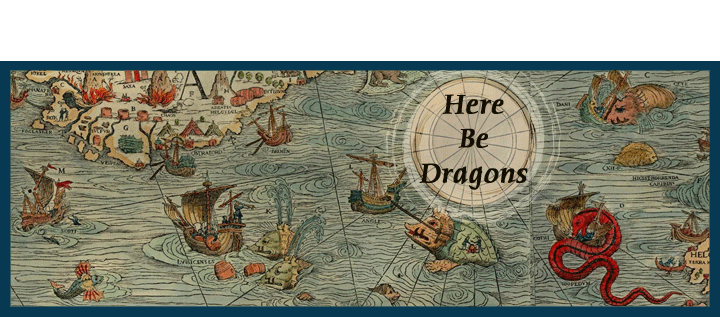
I interviewed Guy Kawasaki a while back about his book “Enchantment: The Art of Changing Hearts, Minds, and Actions .” Guy has an excellent vision of creating fulfilling and meaningful work FOR employees. It’s called a MAP.
Mastery
Give employees the right skills, abilities and time to gain complete dominion over their job. Allow people to go off the farm and continually learn about new things, new ways to do their job. This works, with one small caveat. The person has to be motivated and an auto-didact. Have the energy and gumption to teach themselves on their own time – and enjoy it.
Autonomy
Pretty much the same as Malcolm Gladwell.
You need the freedom to learn and the freedom to fail.
The freedom to pick yourself up after a disaster and move forward, without some nitpicking Napoleonic bureaucrat bugging you.
If you tell people where to go, but not how to get there, you’ll be amazed at the results. – General George S. Patton
But some people truly don’t like autonomy. They need structure to tell them what to do, how to do it and when to do it. This is the mindset of the past. It worked for the industrial age. But not for this meltdown of an economic job-shedding mess we’re in.
The future belongs to energetic autodidacts. Ones that need only be pointed in the right direction – and then they ask you not to block their way.
People that will create new processes, new businesses, new breakthroughs and ultimately new industries – if you only stay out of their way.
Purpose
If you combine mastery of the job with autonomy, you’re doing pretty good. If you’re living that life, it’s a pretty good gig. But the missing ingredient, according to Guy, is purpose. Being a part of something bigger than yourself. Making a difference in the world. A dedicated, fire-breathing believer in something that matters.
This, I think, is the hardest part. Particularly in these times. What if you have;
A job that sucks?
A job with low pay, no advancement possibilities, or toxic work environment?
A job that is ruled by sycophantic drones that only have their position because of nepotism?
And you’re treated like a mindless automaton or smart, but ultimately meaningless serf?
Whatever you are, be a good one. – Abraham Lincoln
That’s tough. But you can do it. Simply focus on doing the best you can at what you do while planning your escape from the soul-sucking situation.
I Don’t Want Employees
You don’t need employees these days. Relegate that serfdom term, employee, to the dustbin of mediocrity.
You need people who want to drive the CAR with their MAP to work passionately.
Partners in Purpose
These are not employees.
These are partners in purpose.
What could be better?

![]()


































































Recent Comments
Lessons Learned from Hollywood STORY Guru Robert McKee